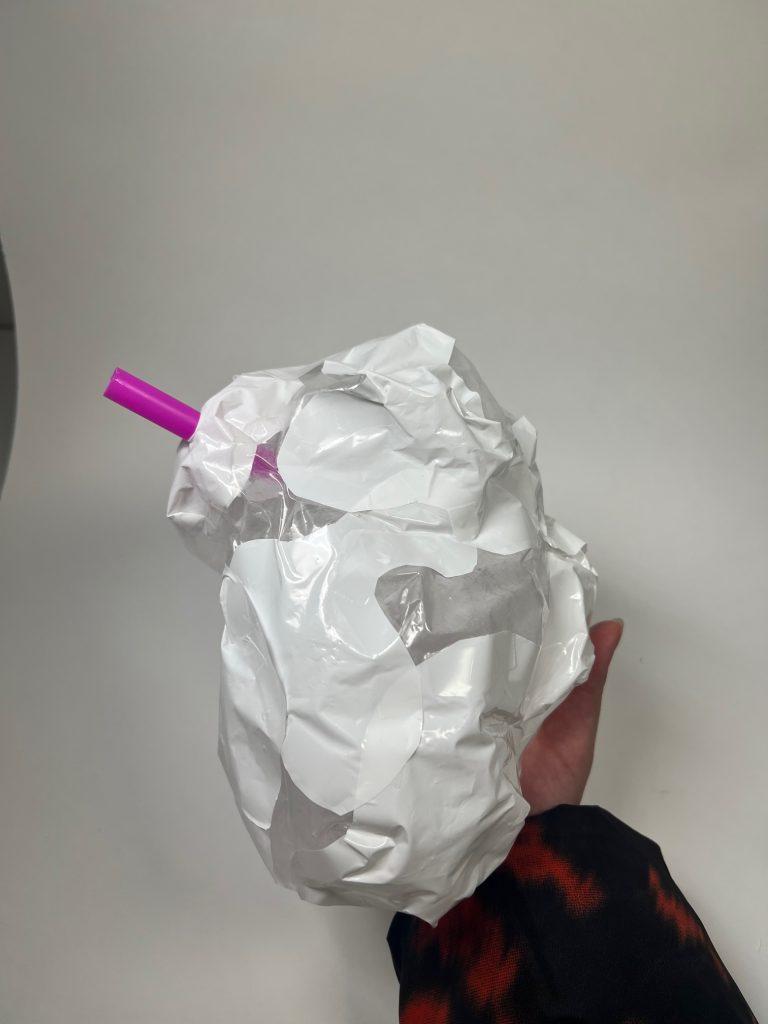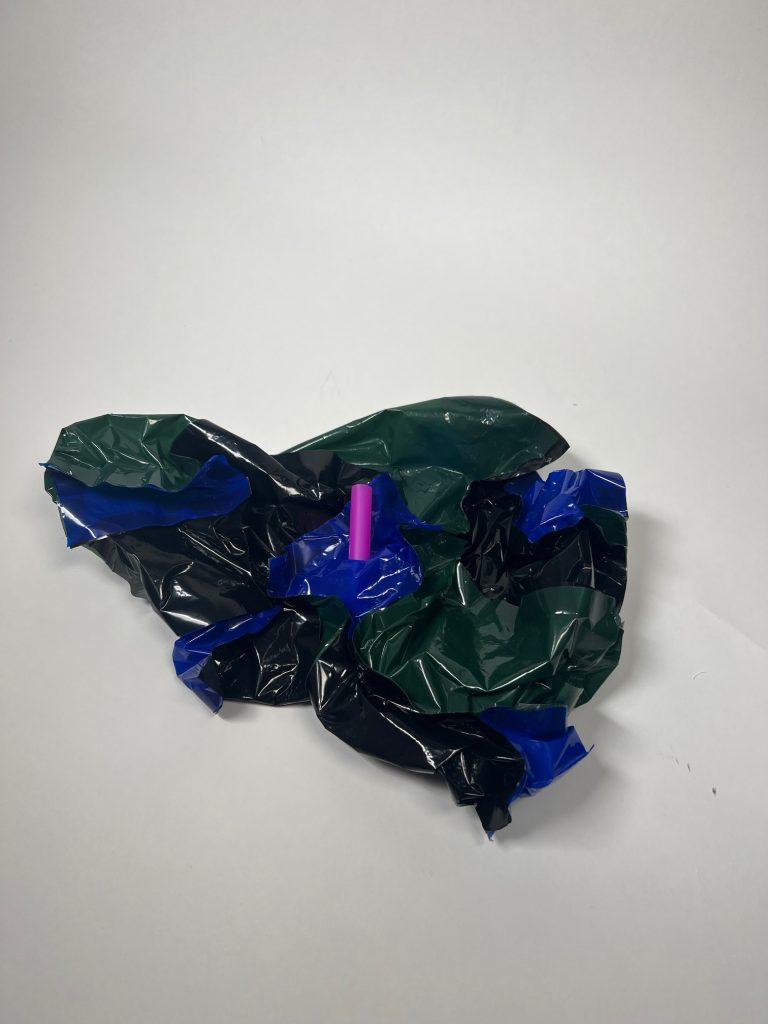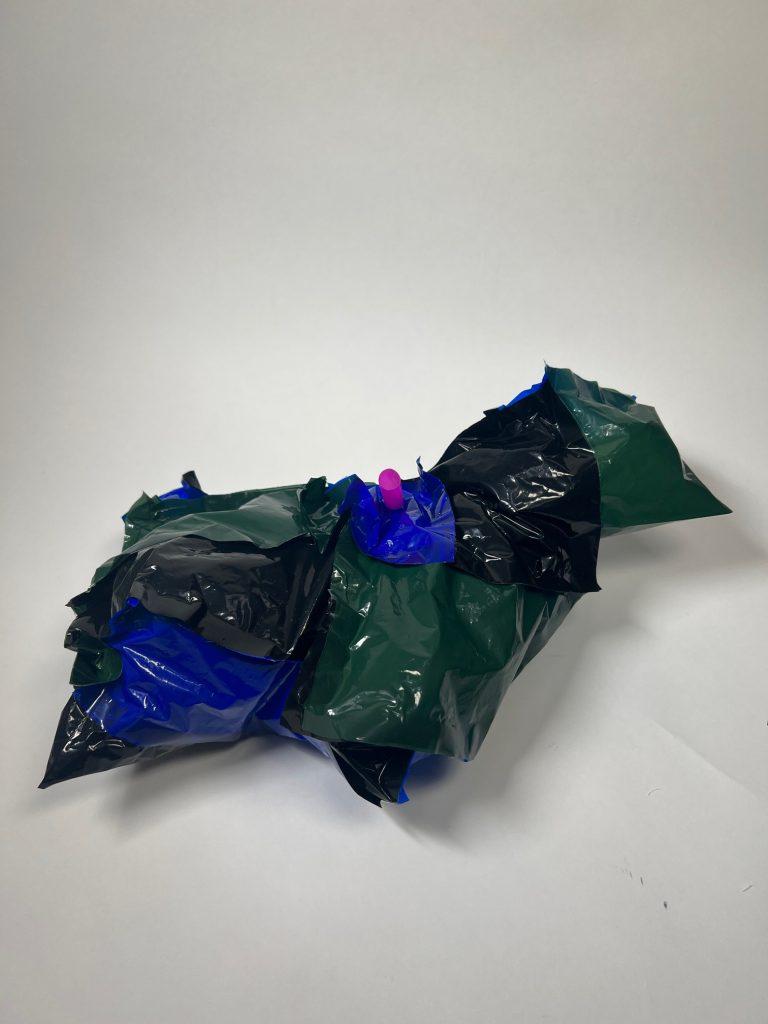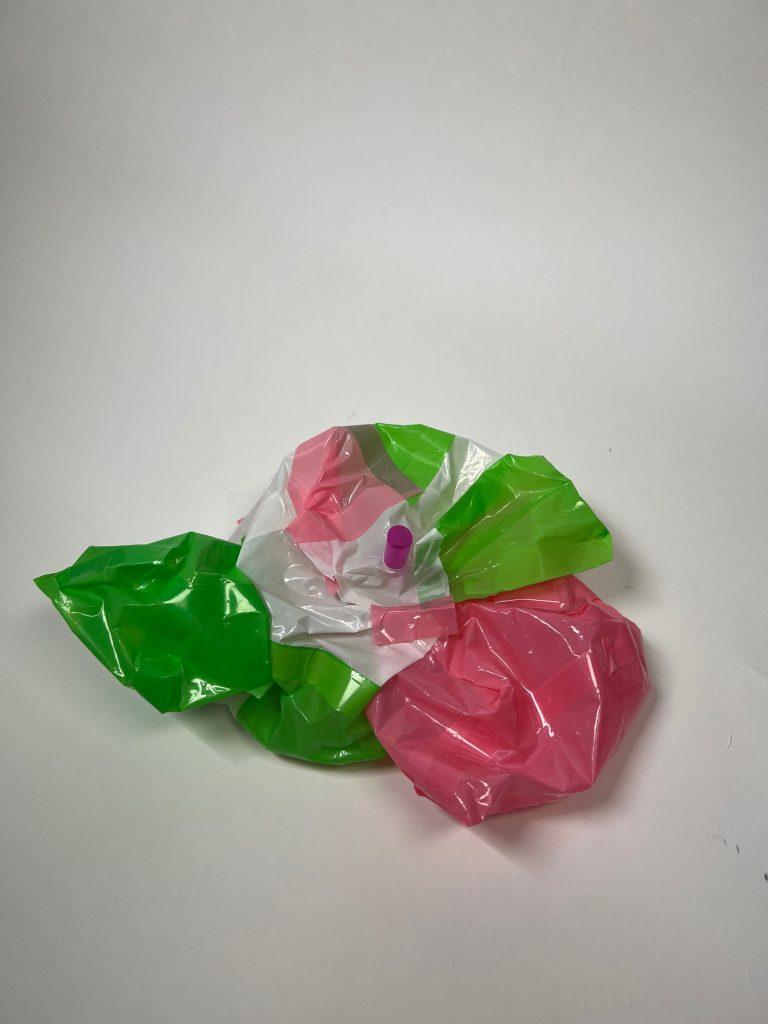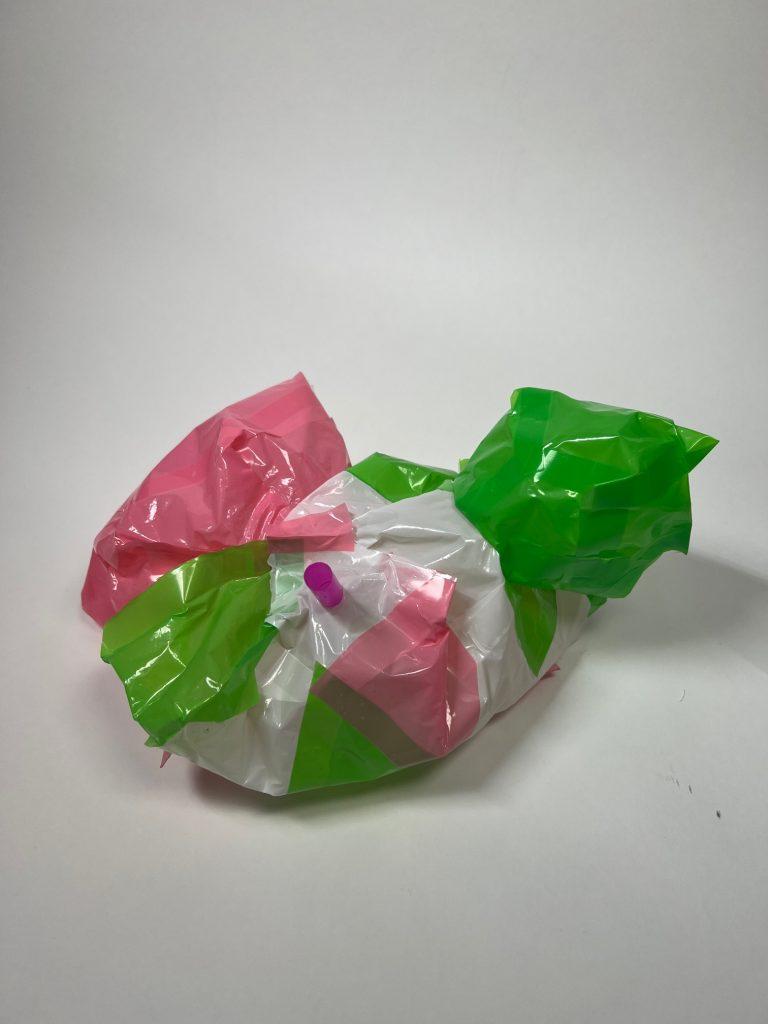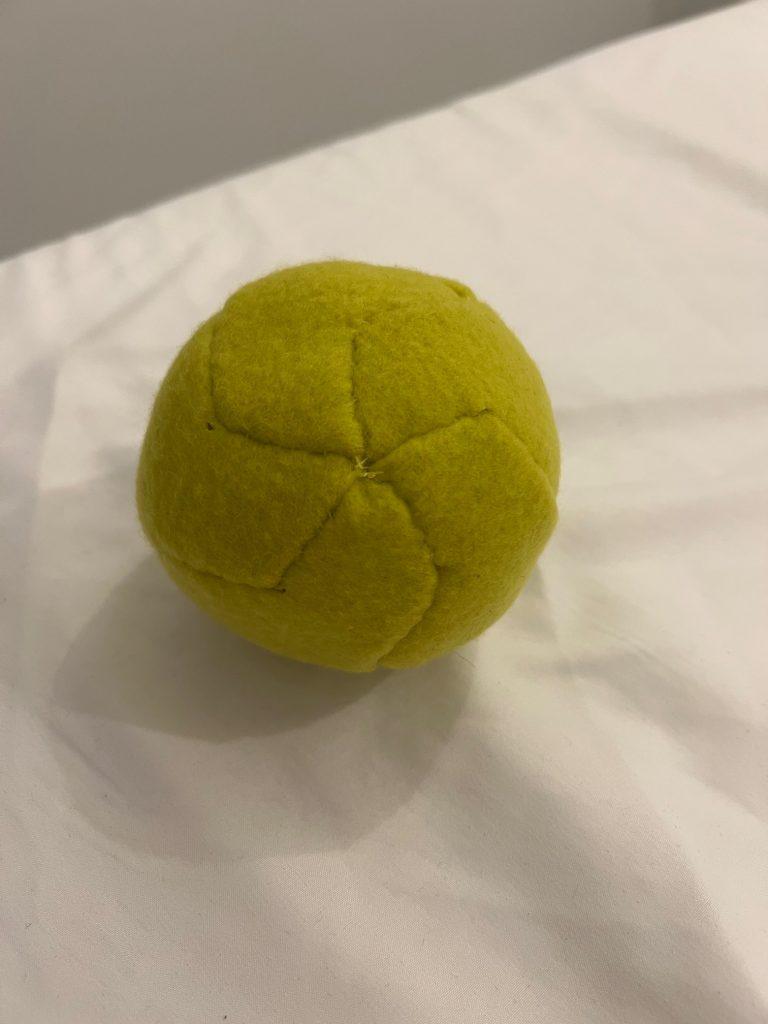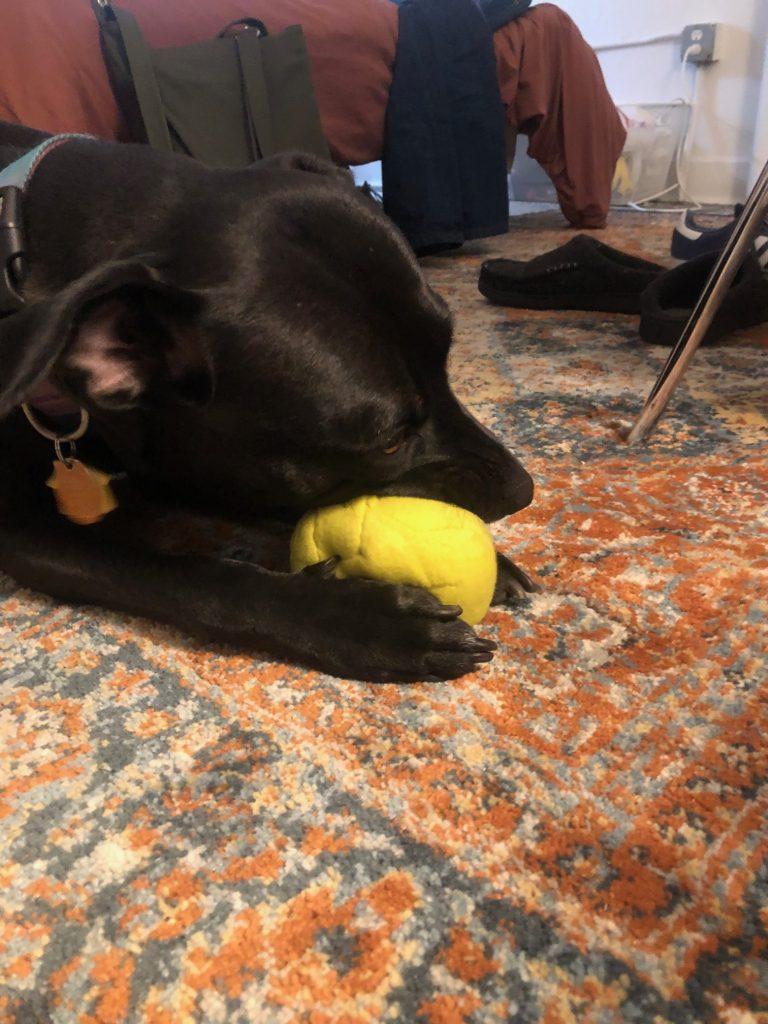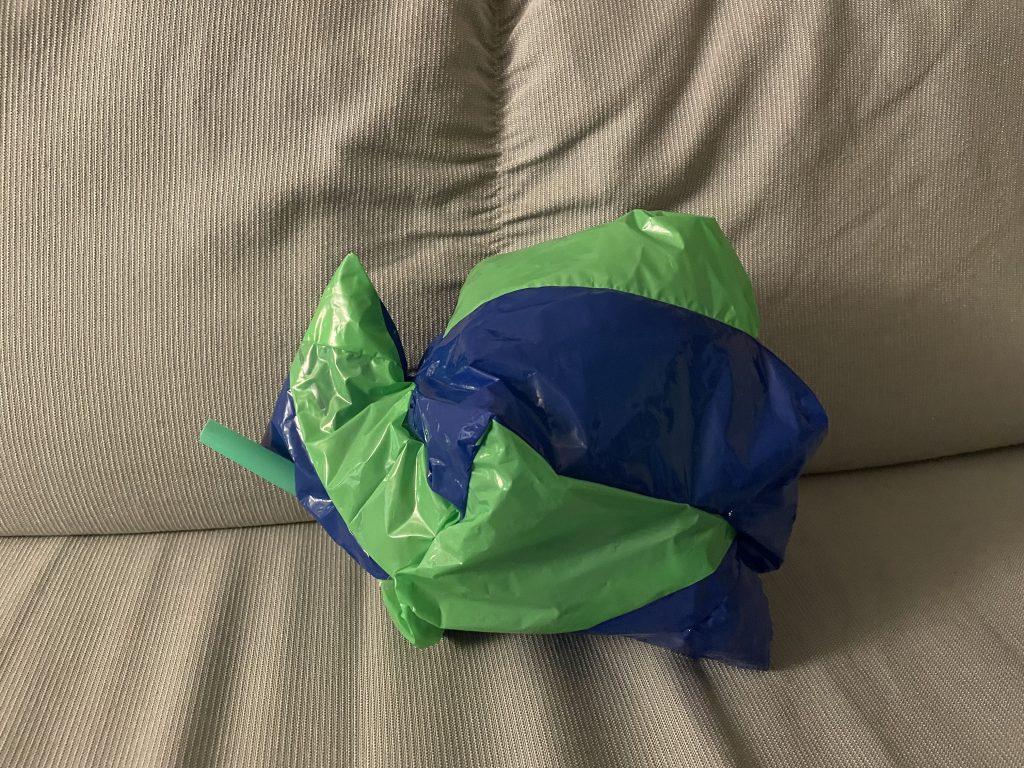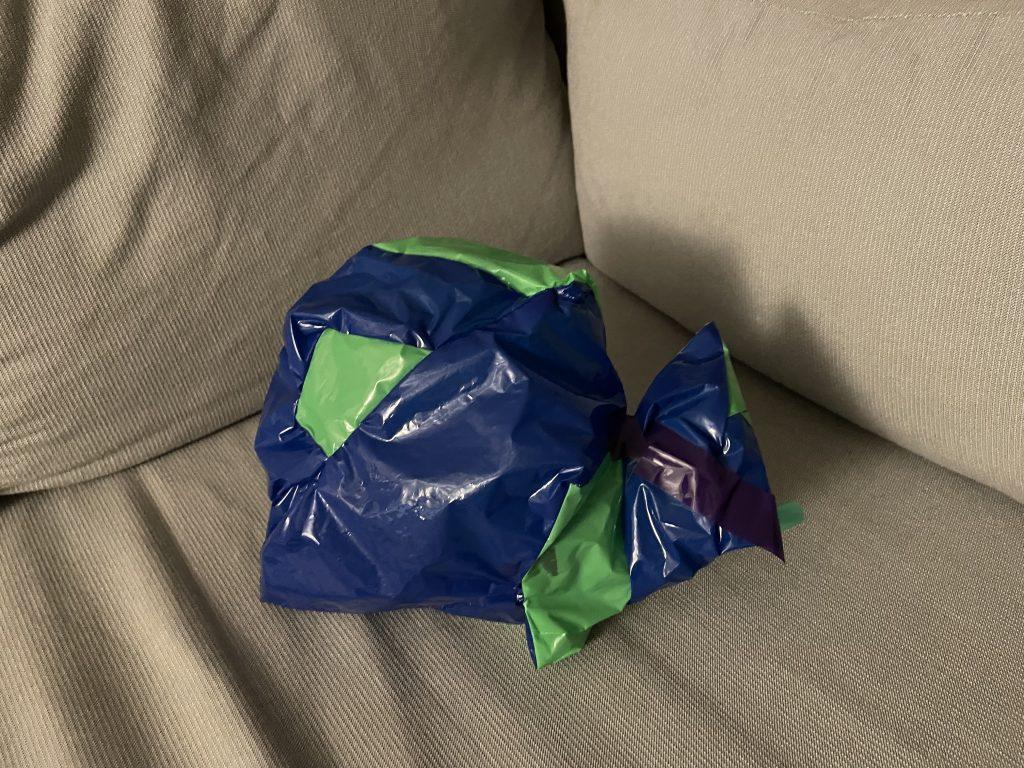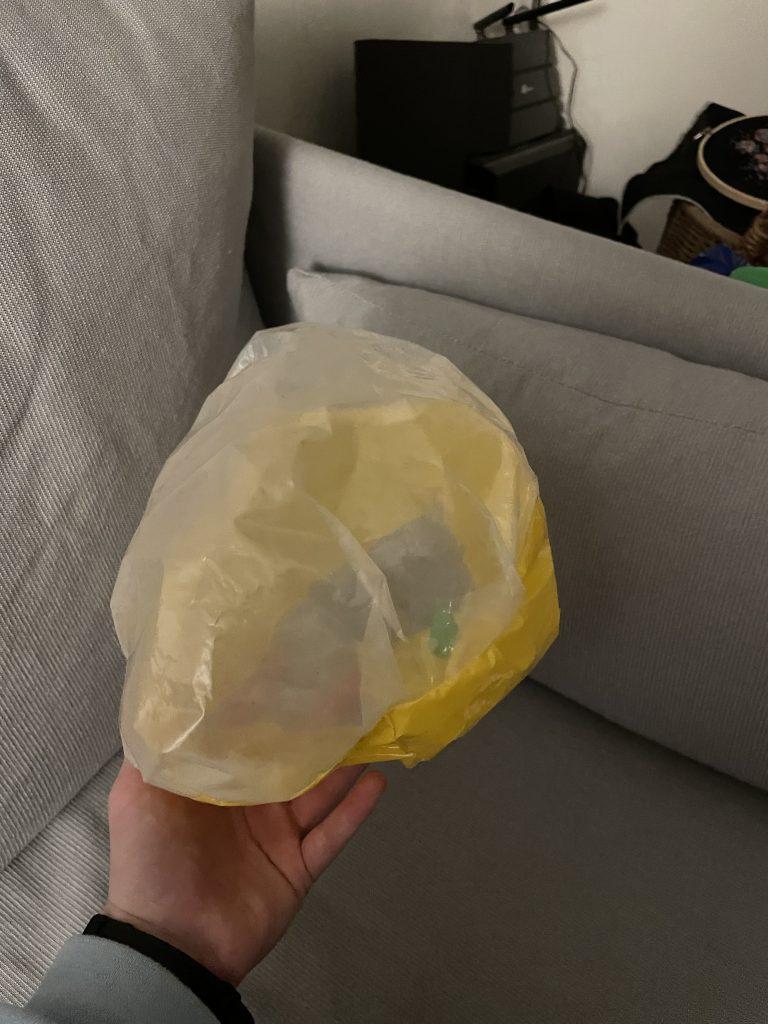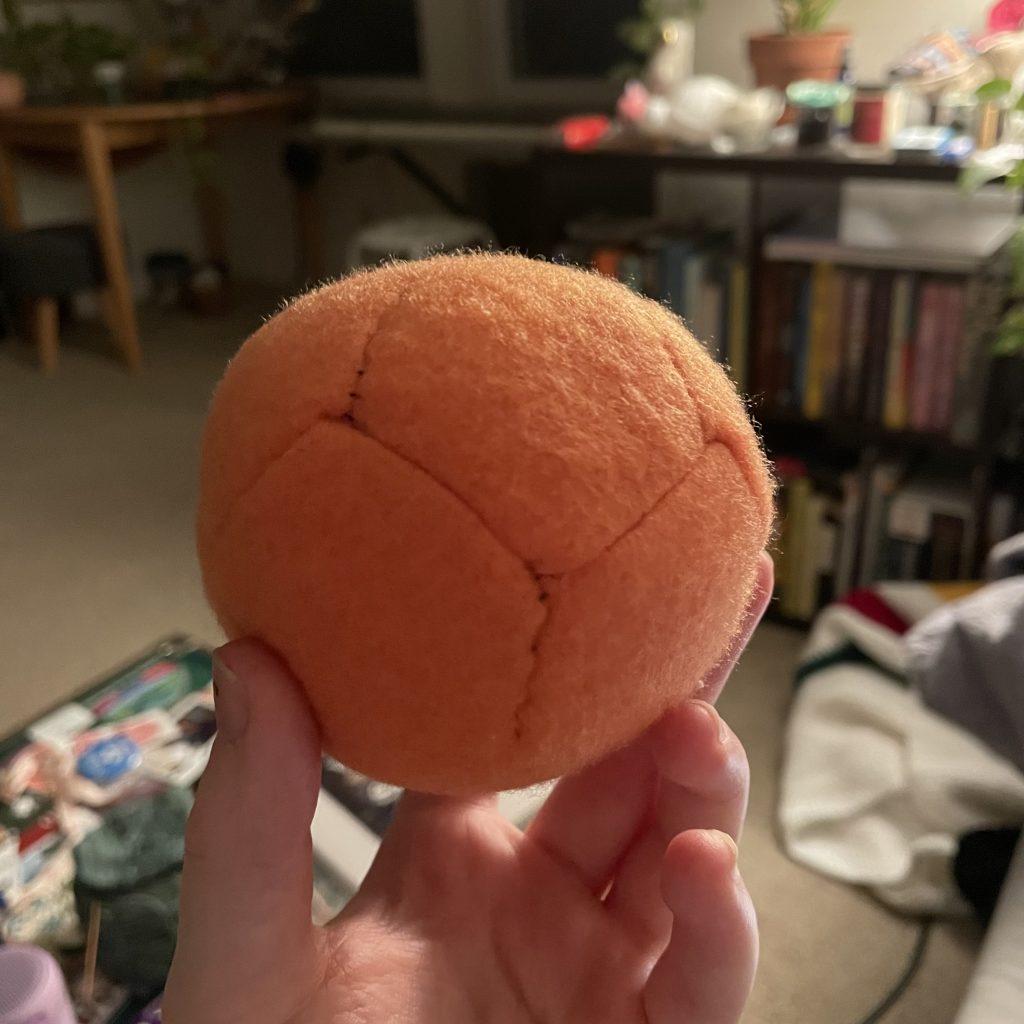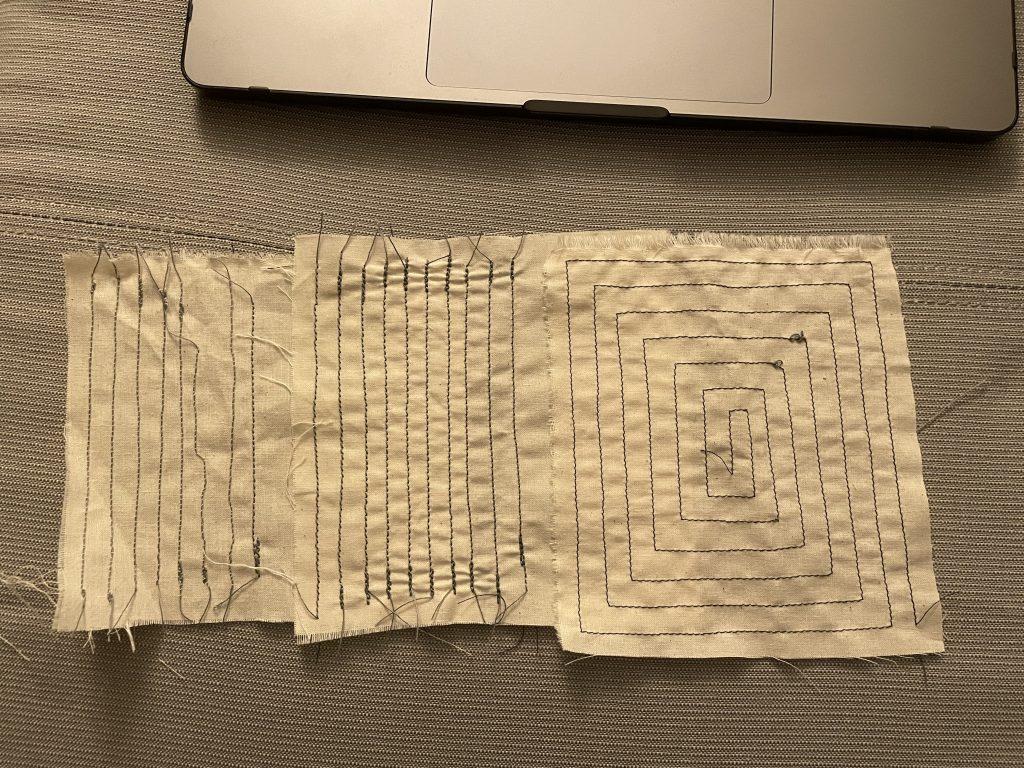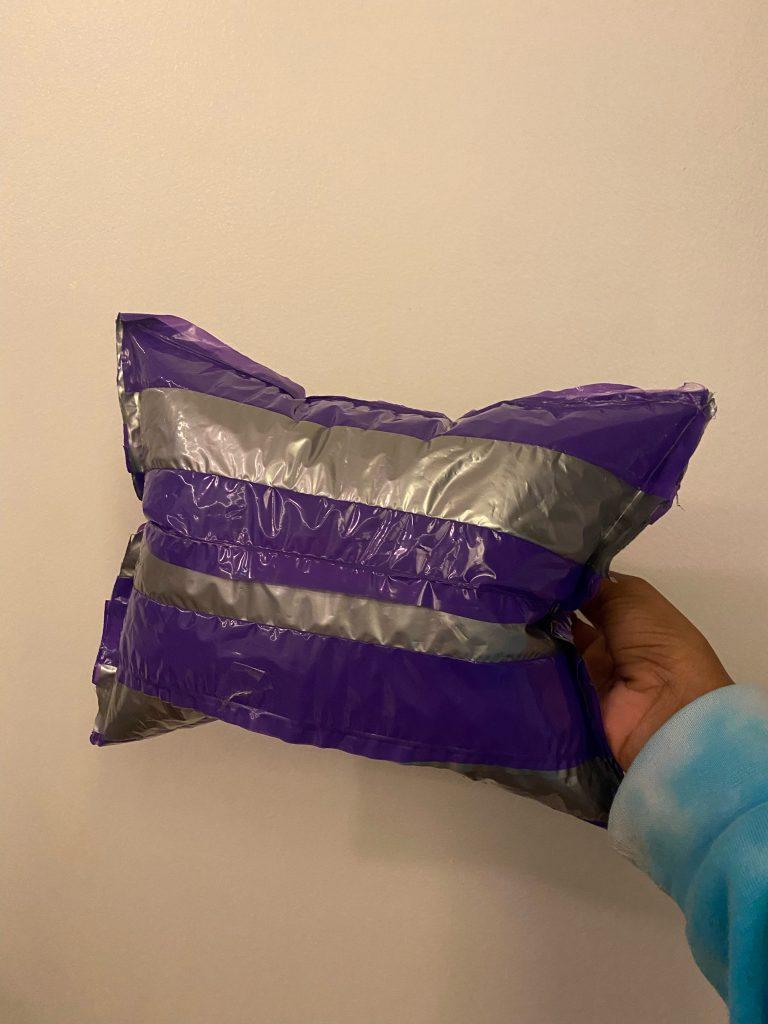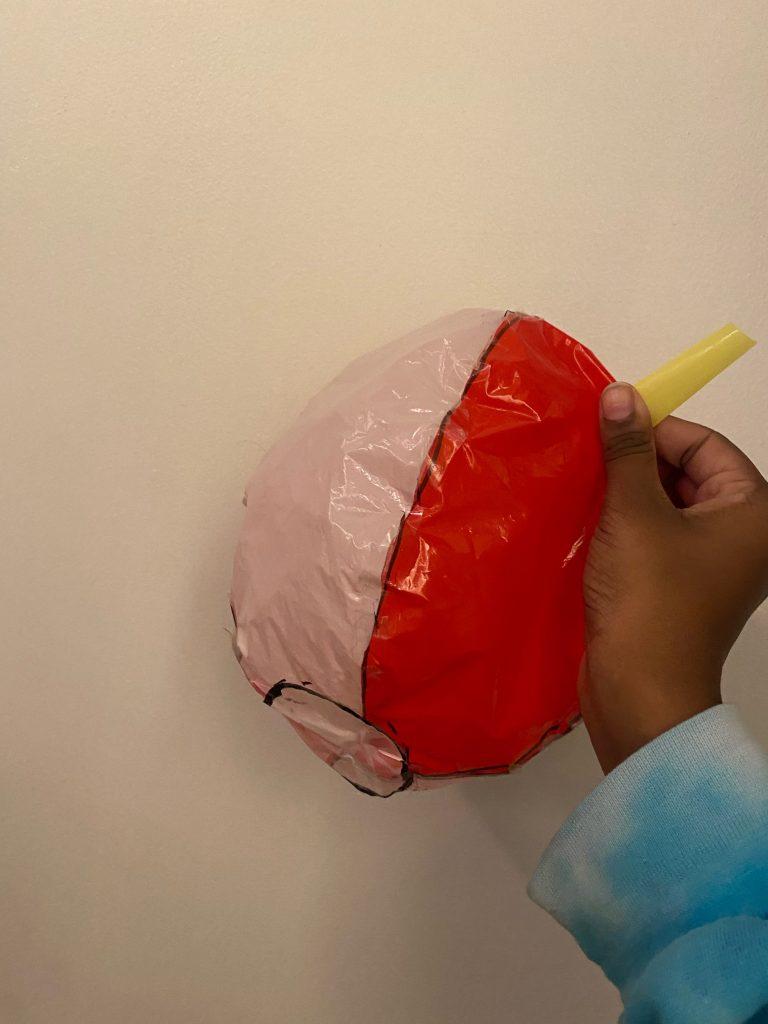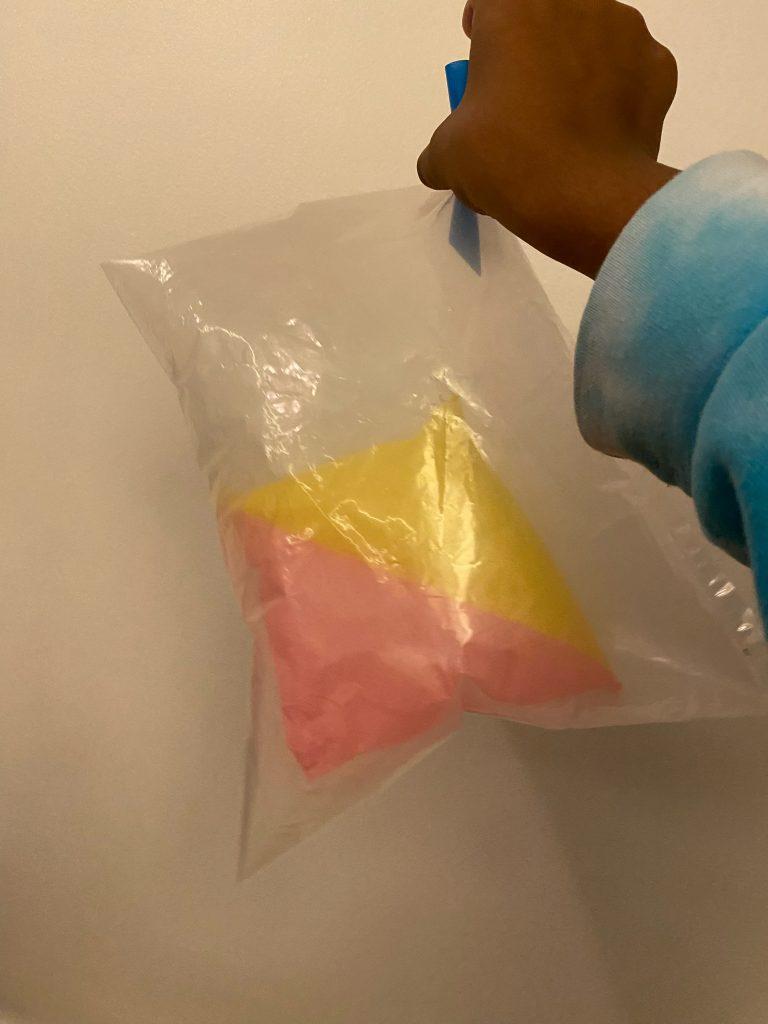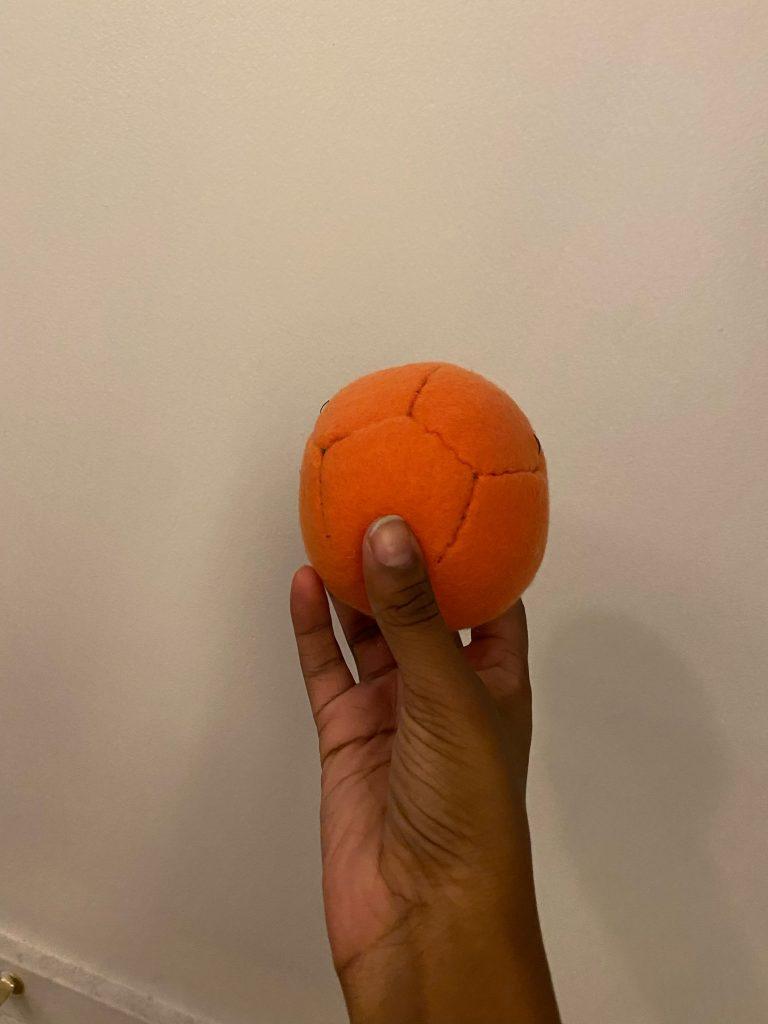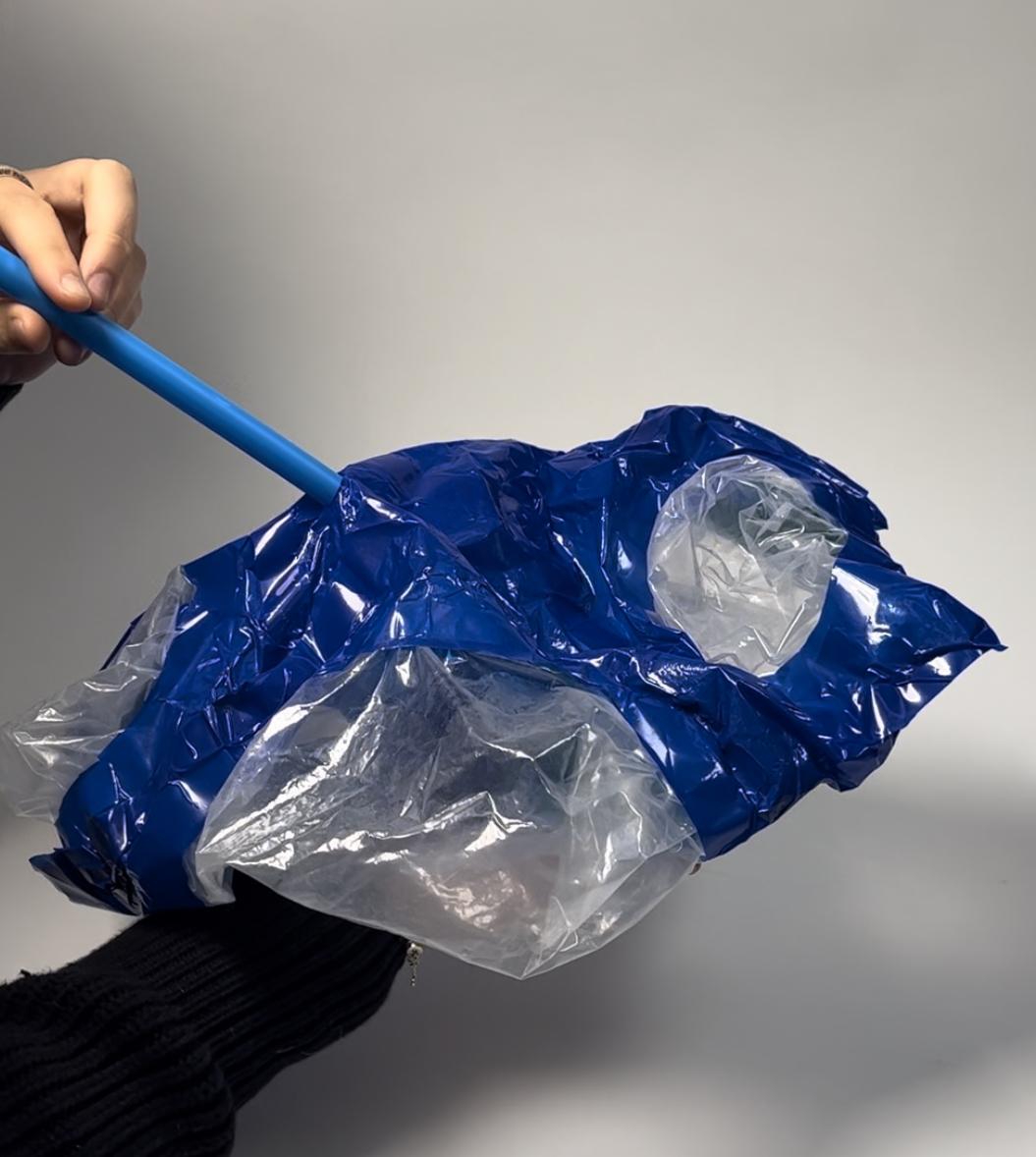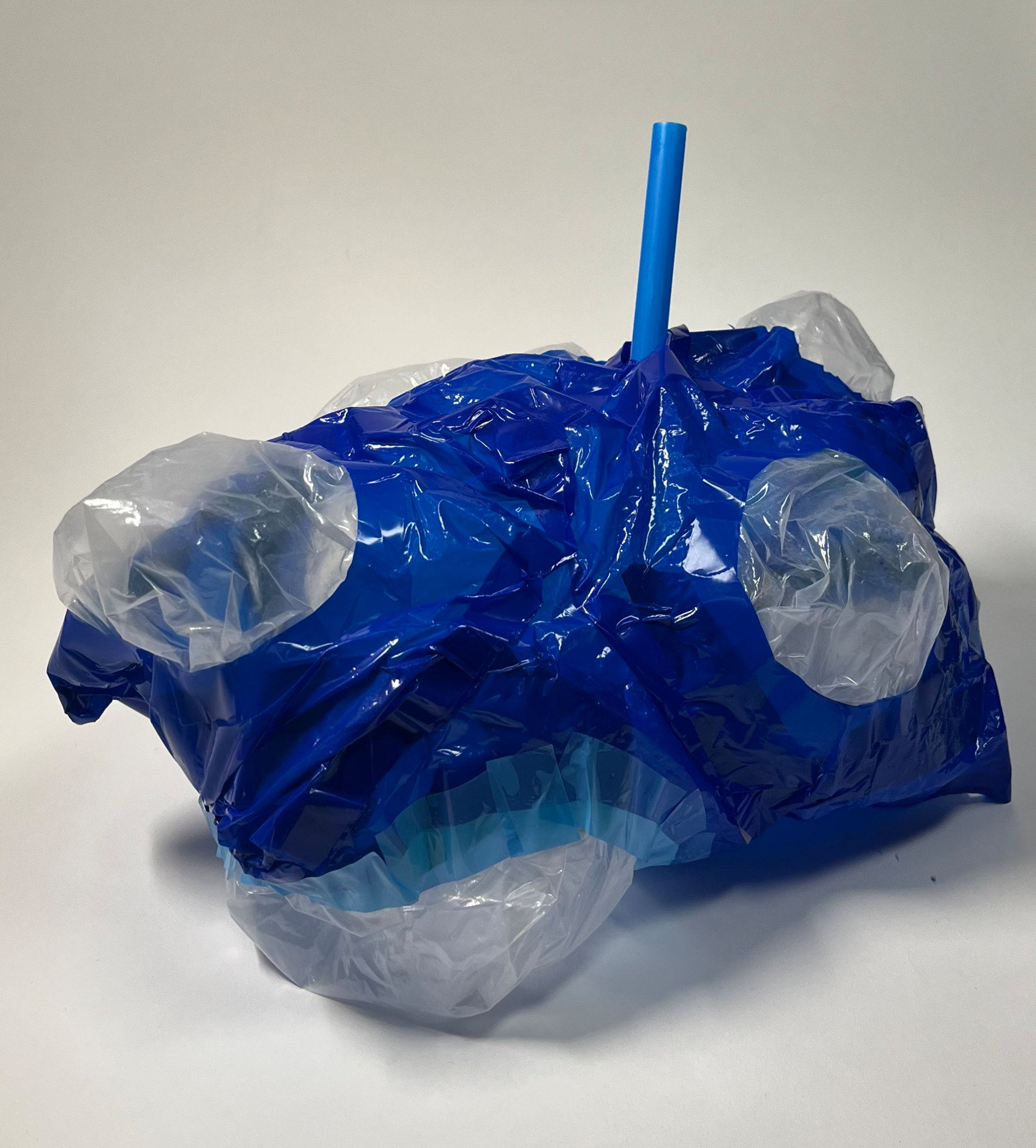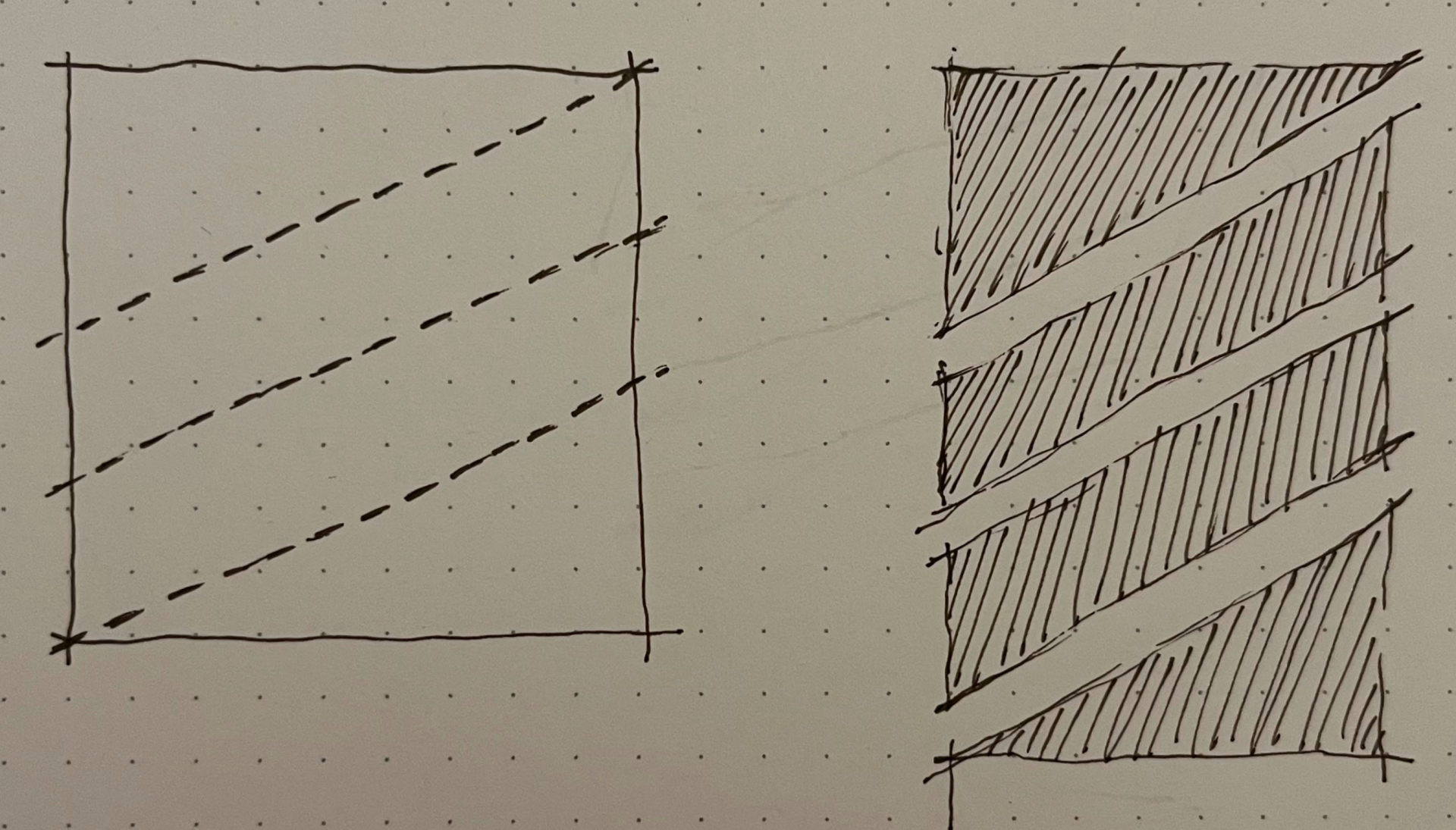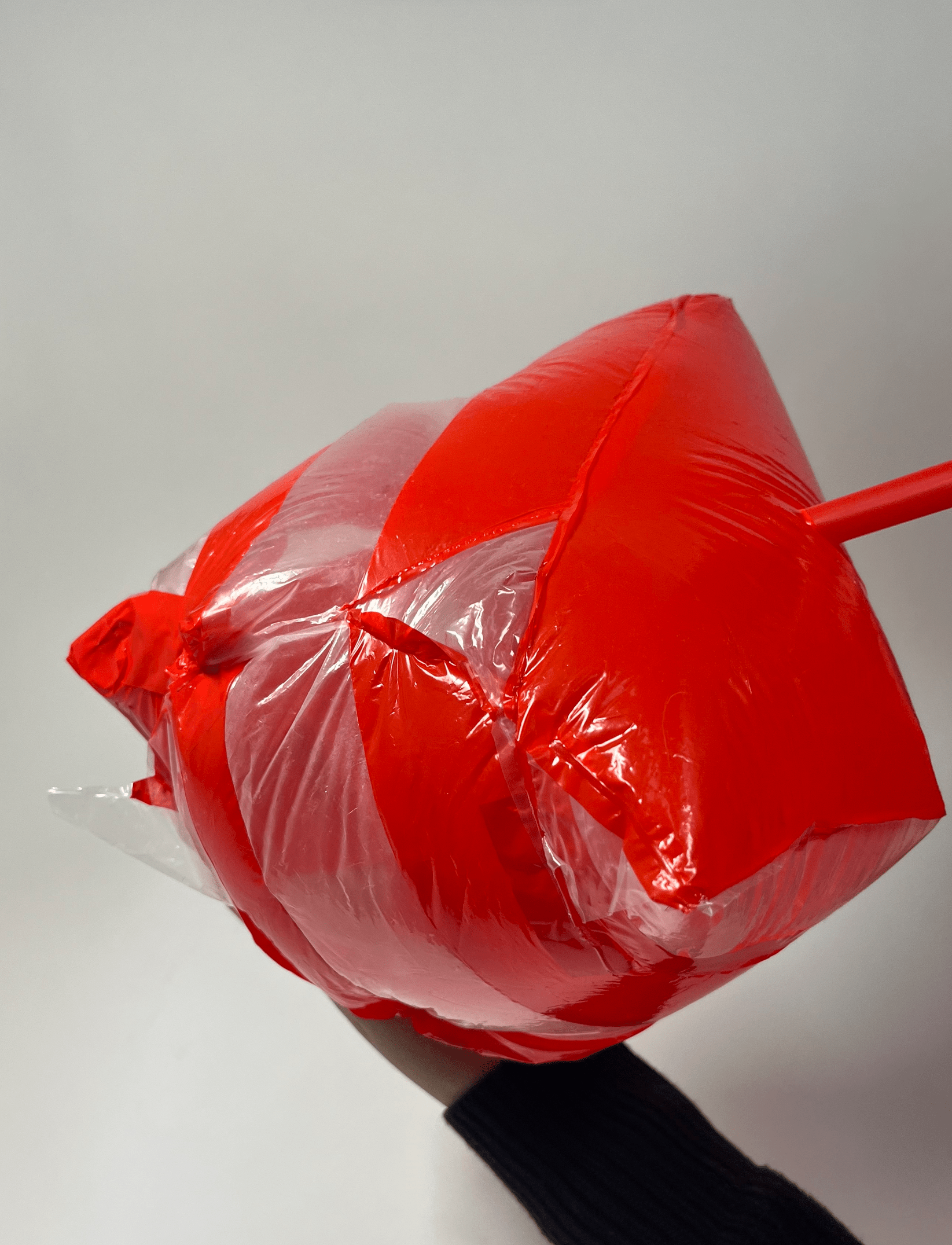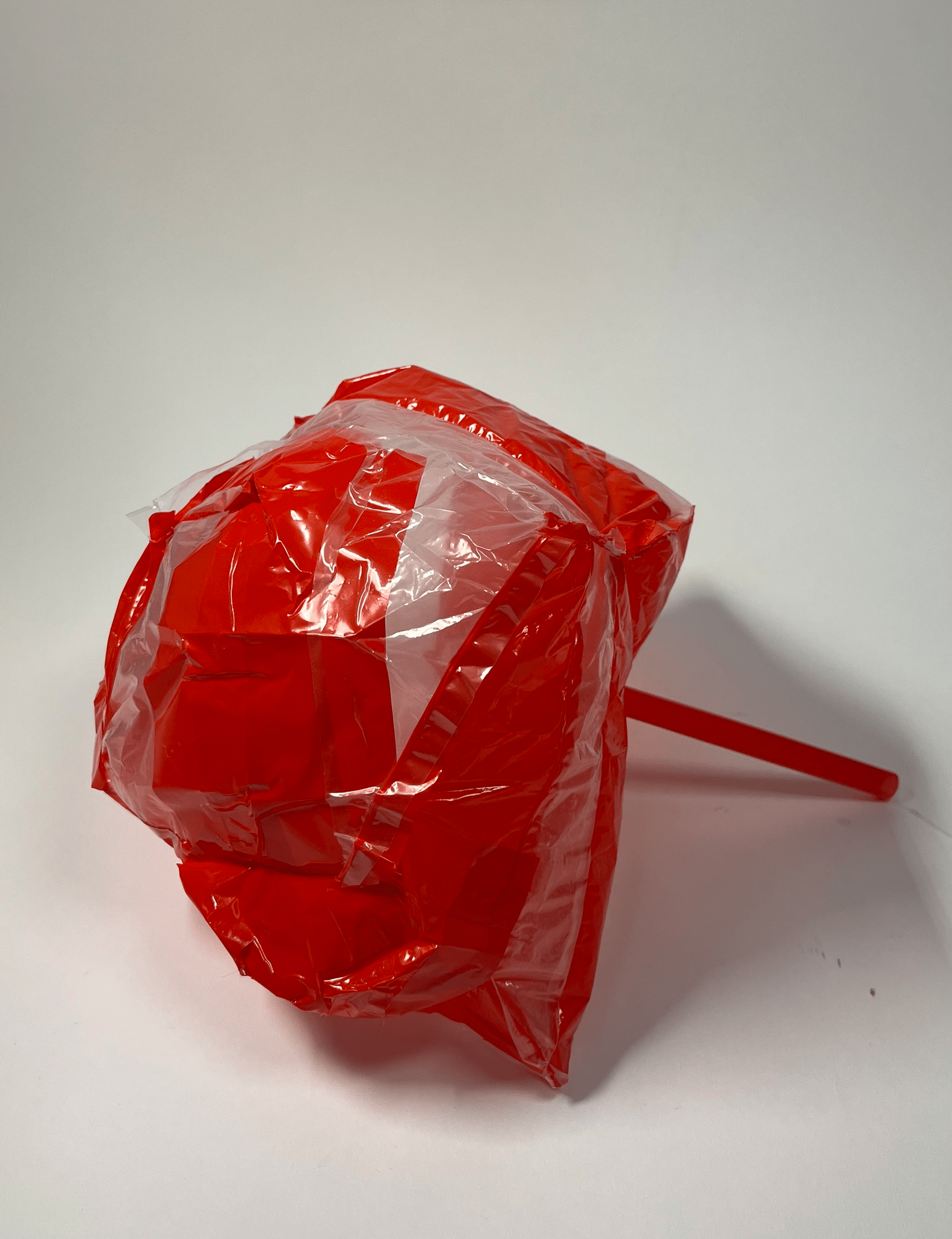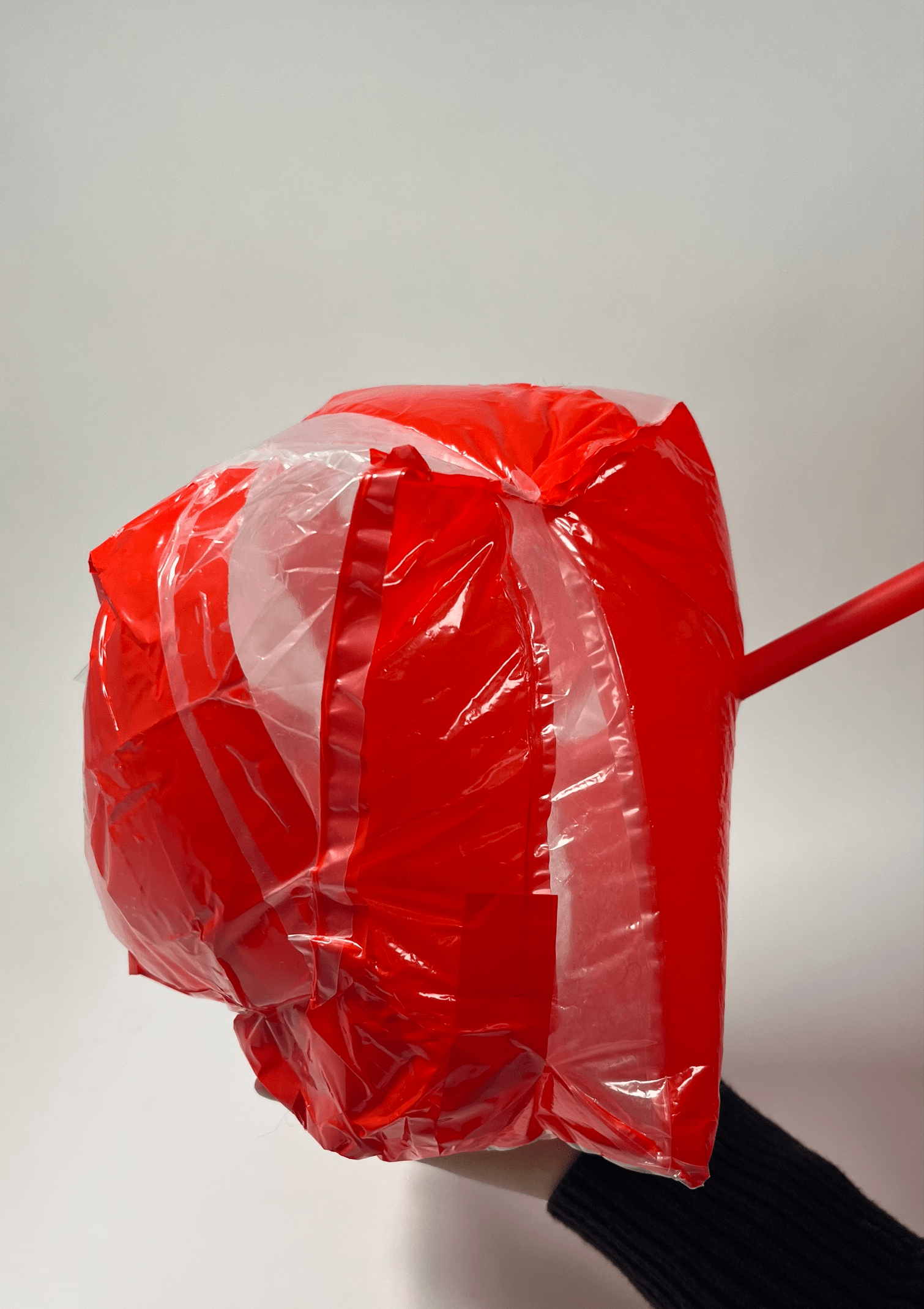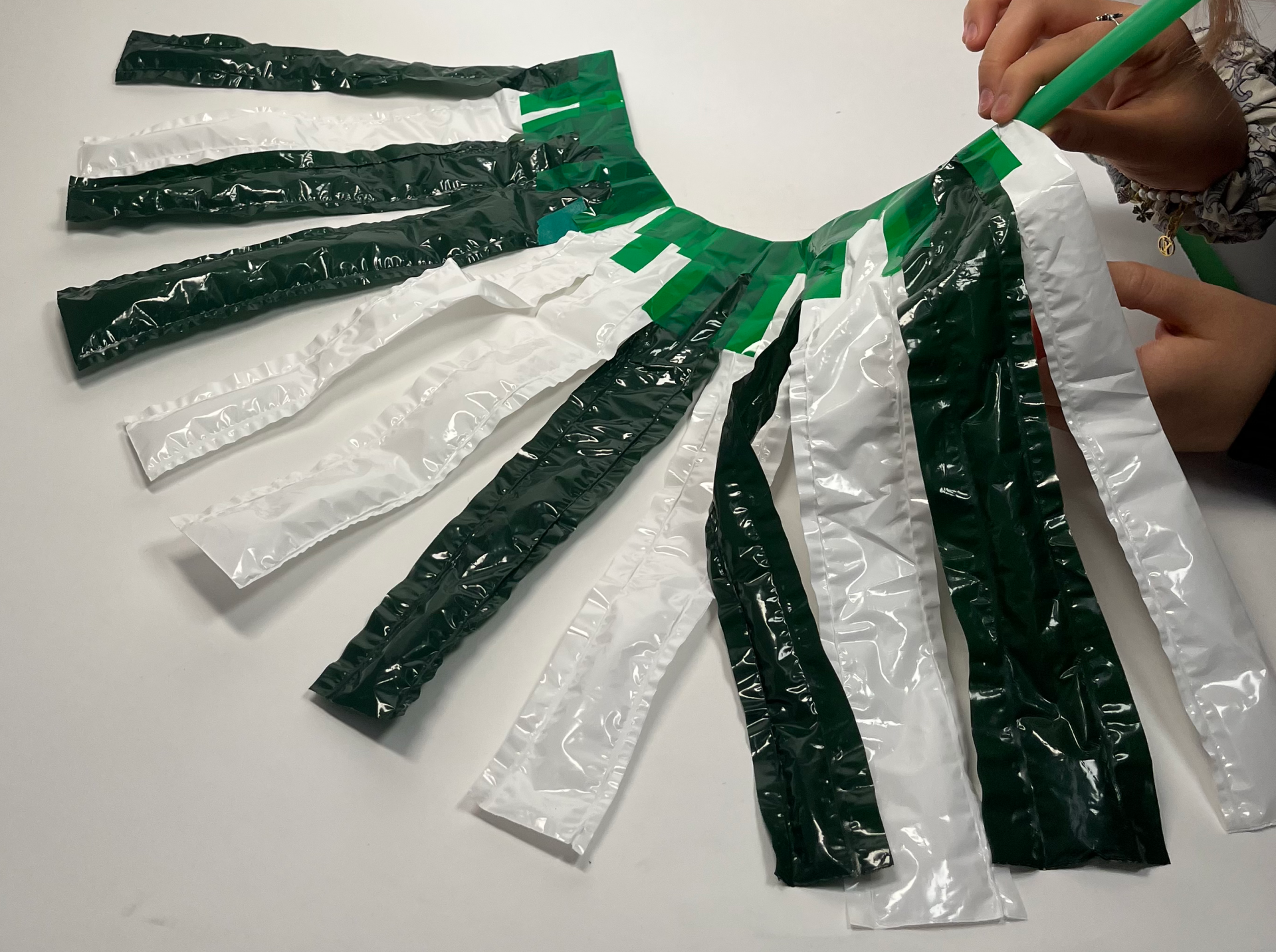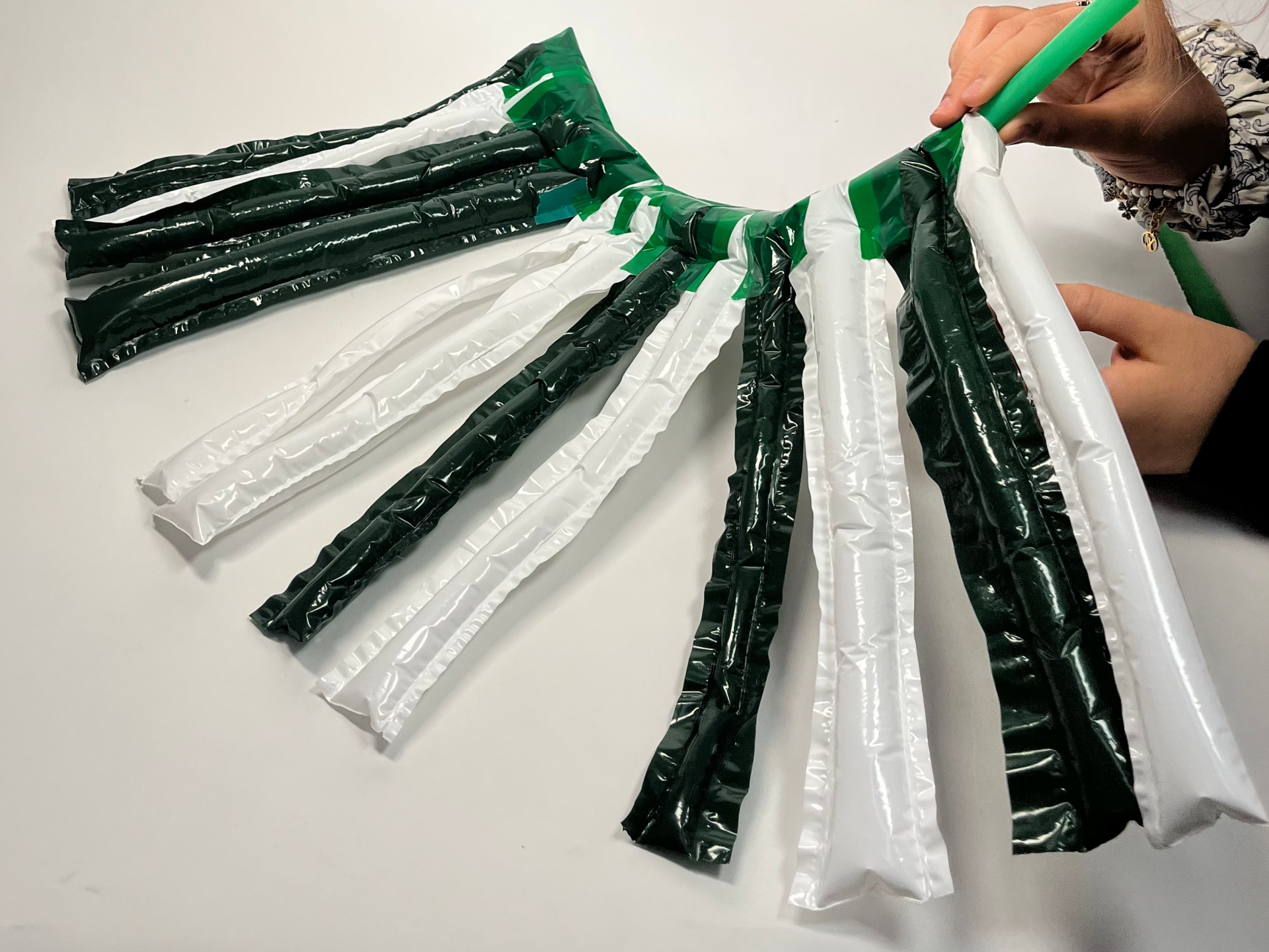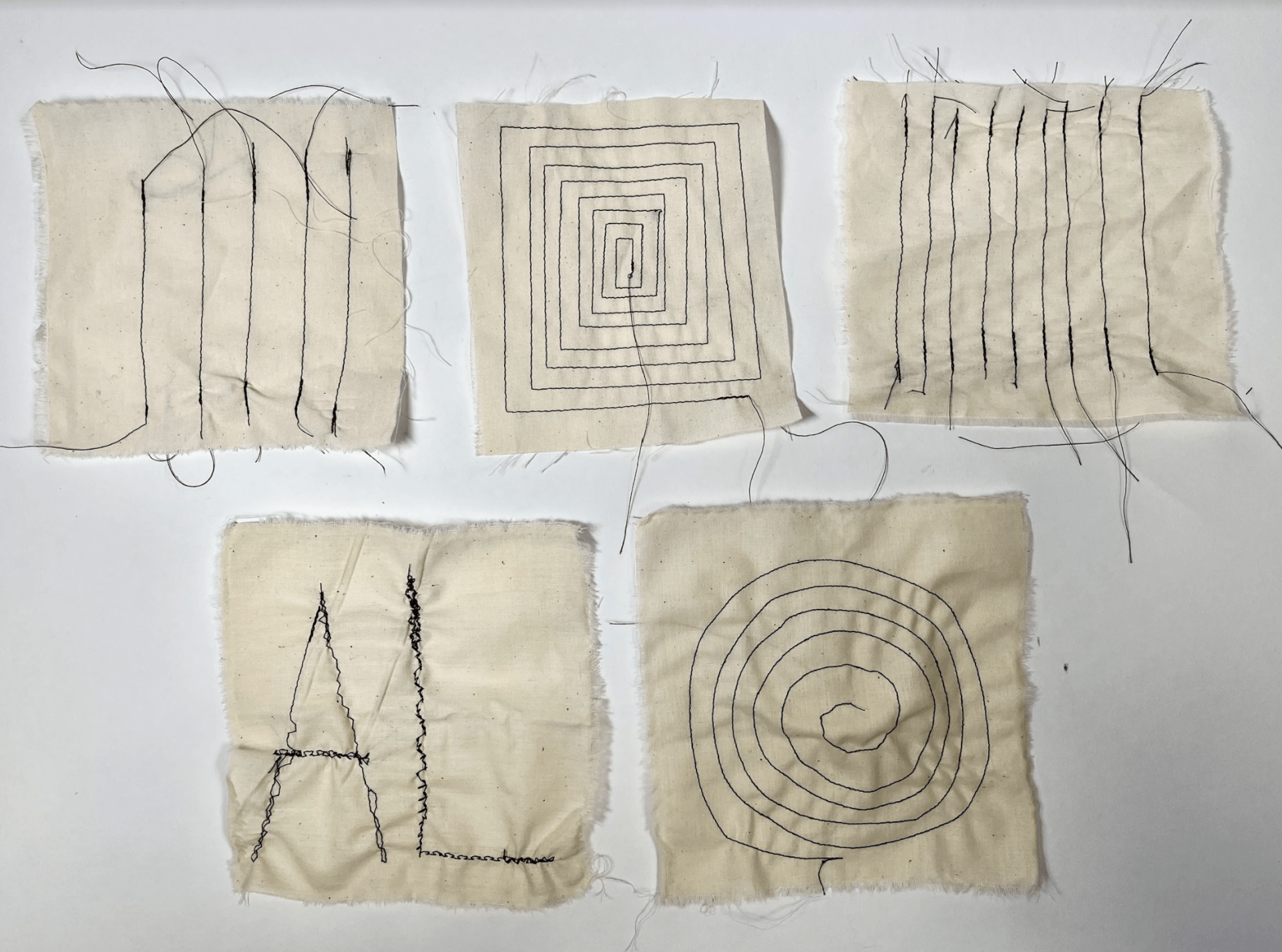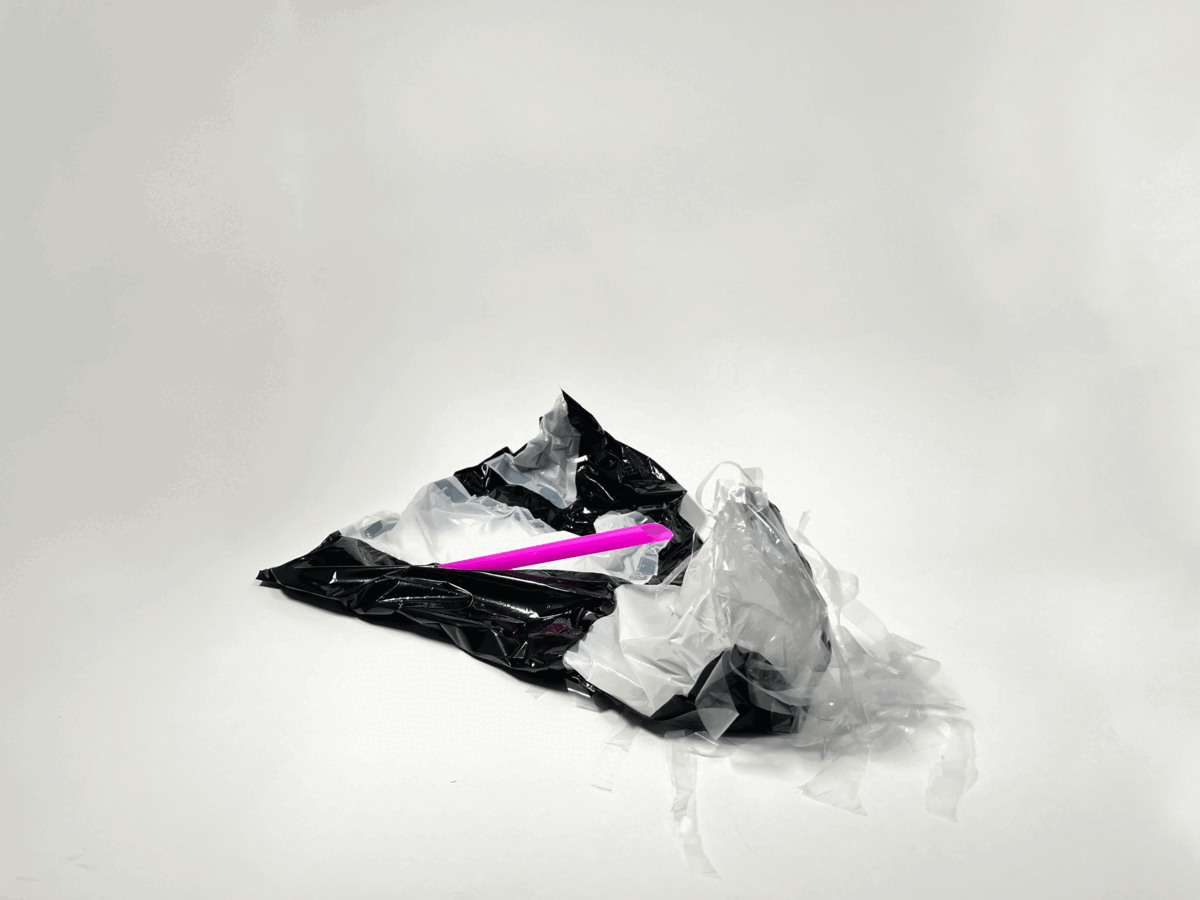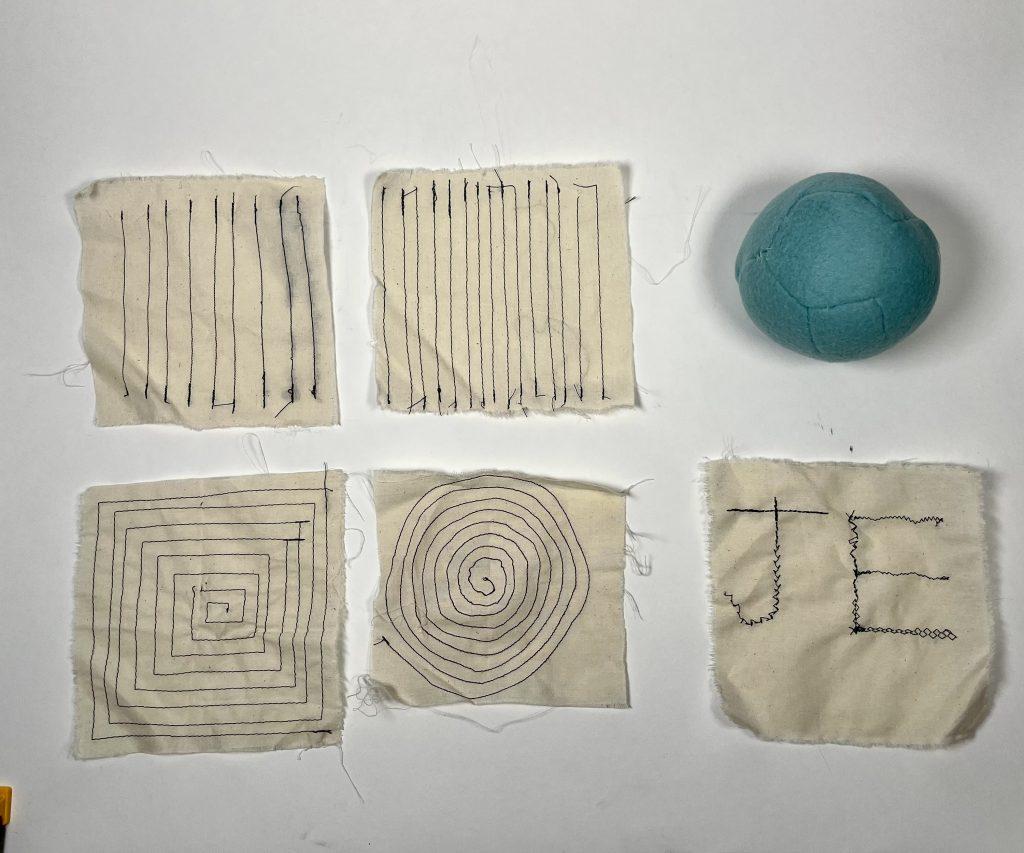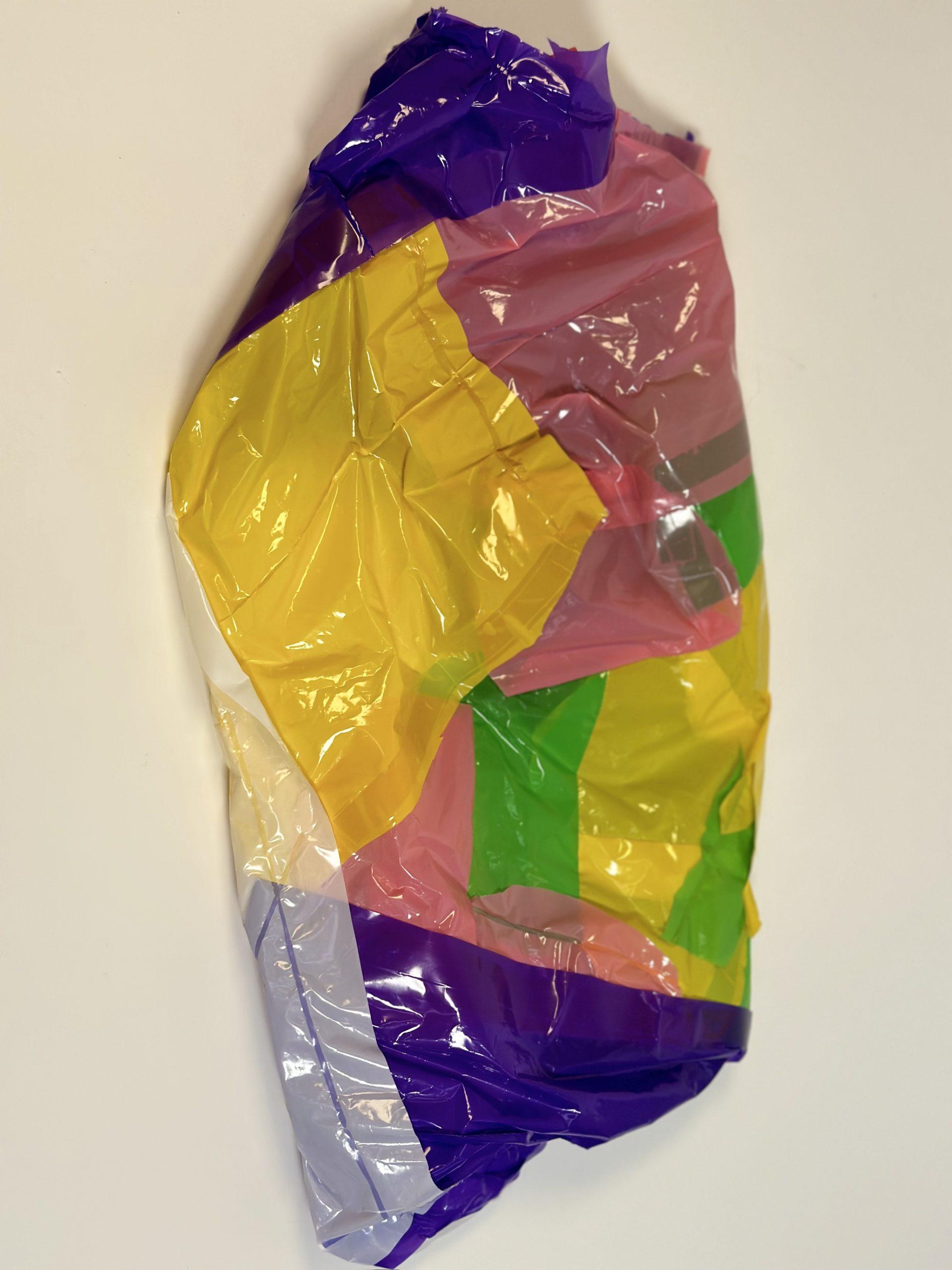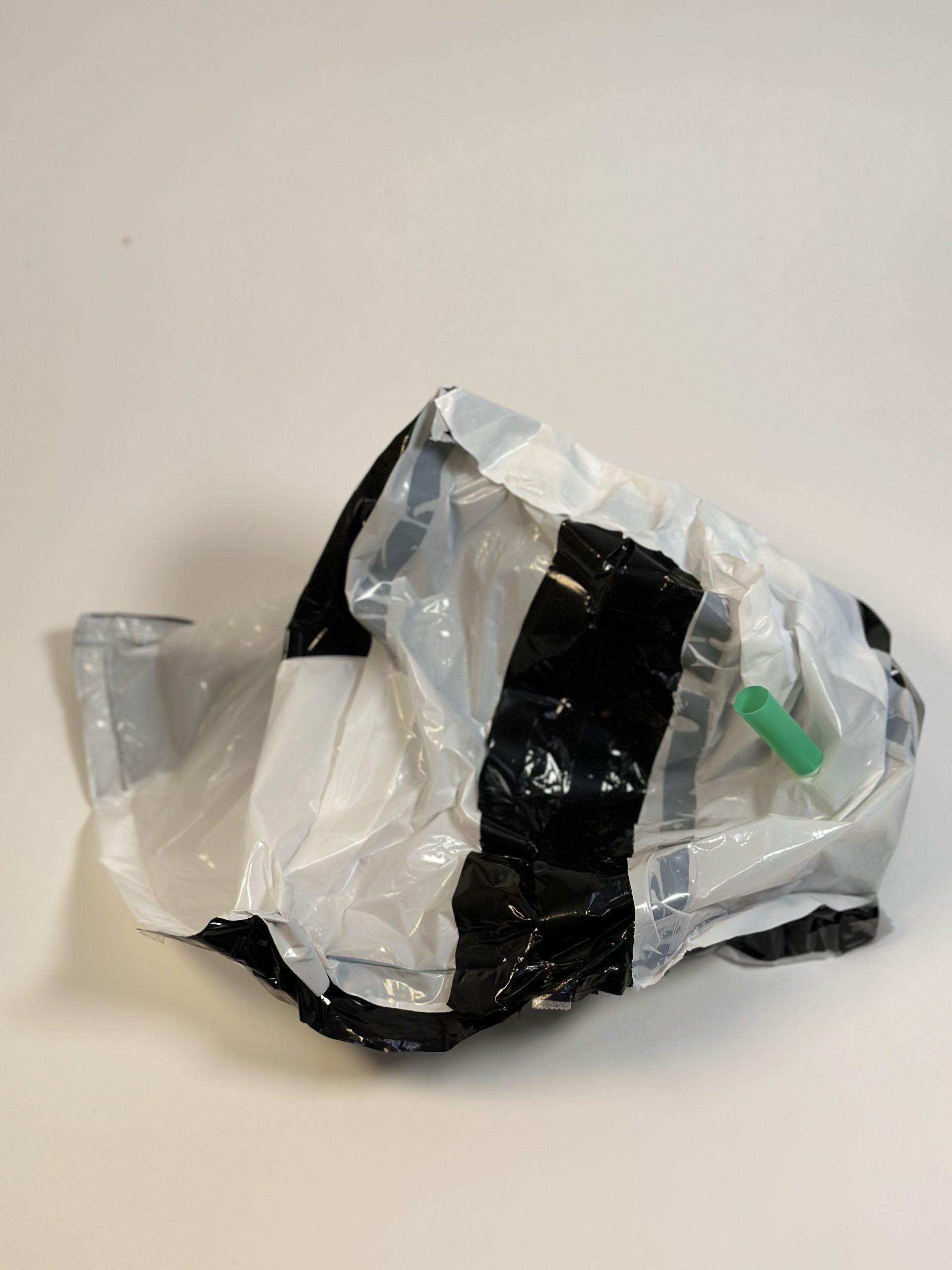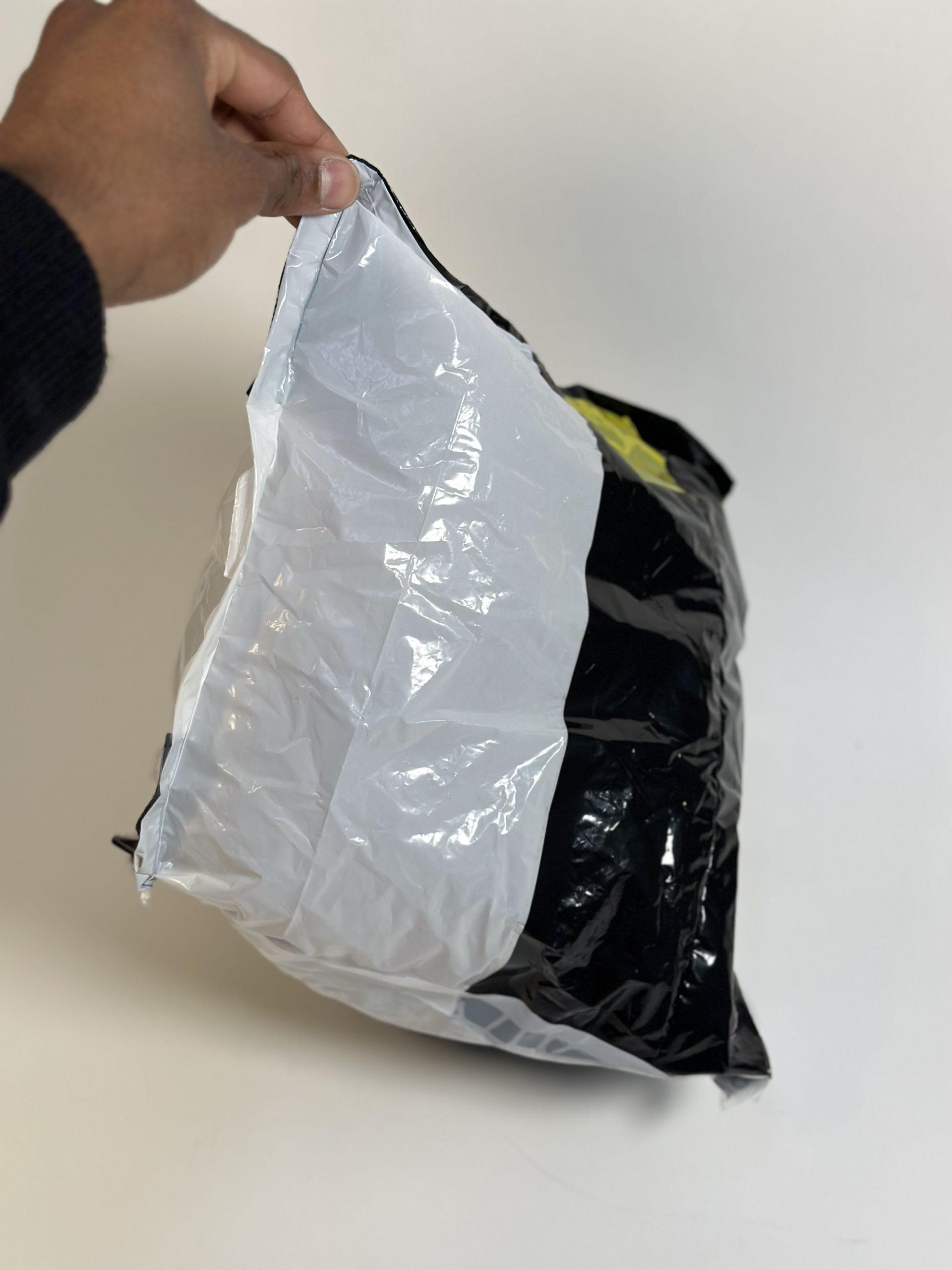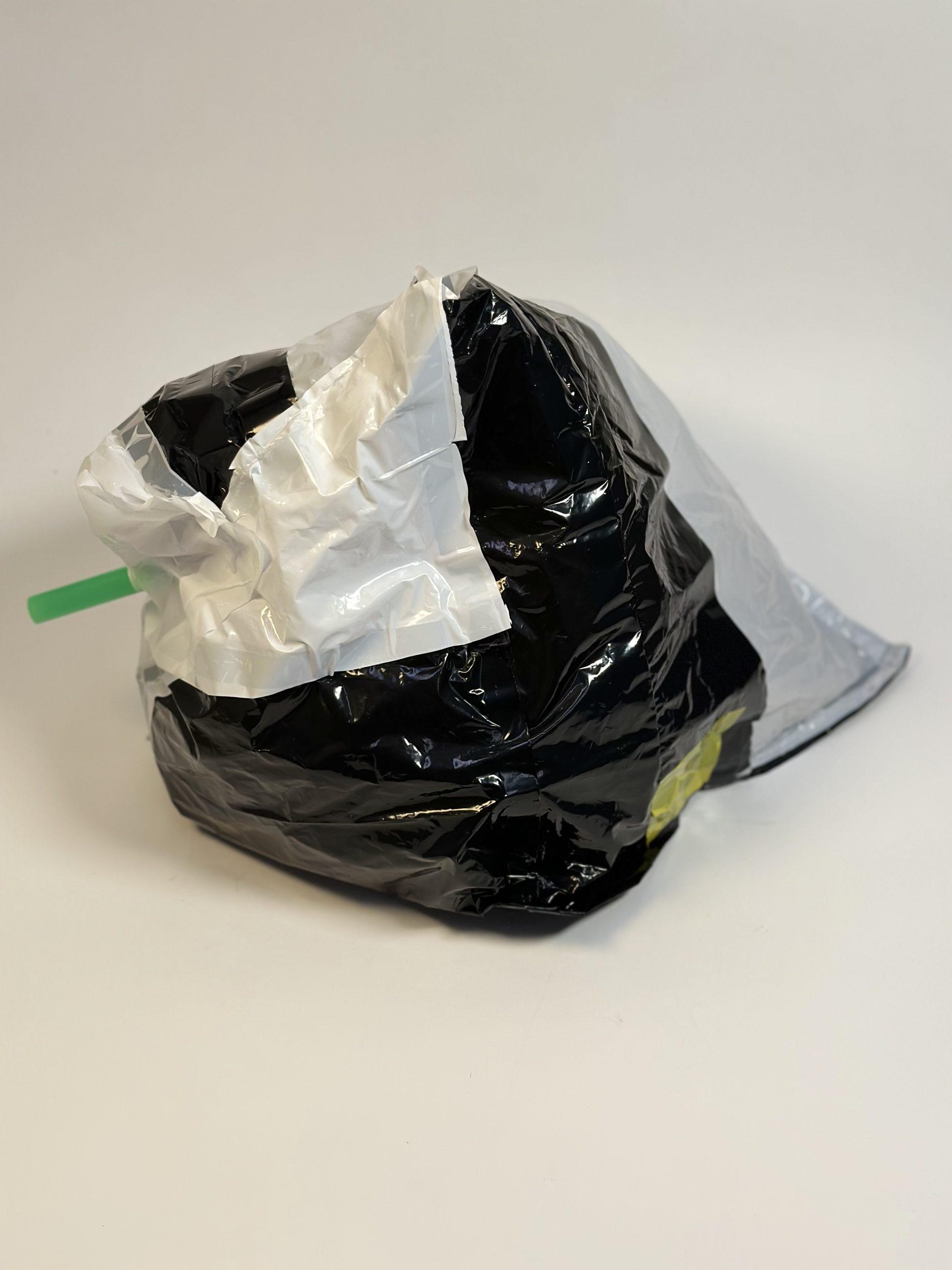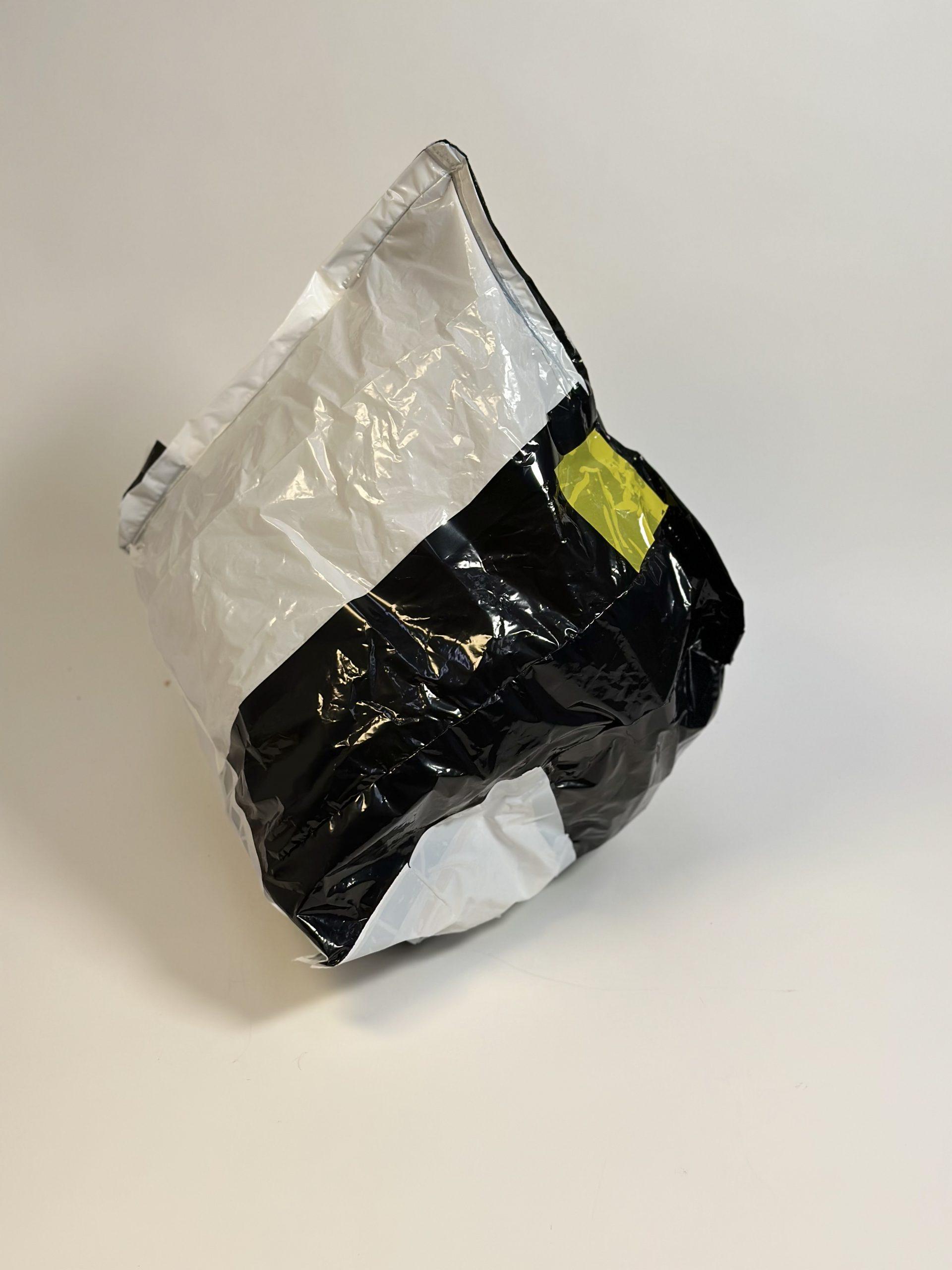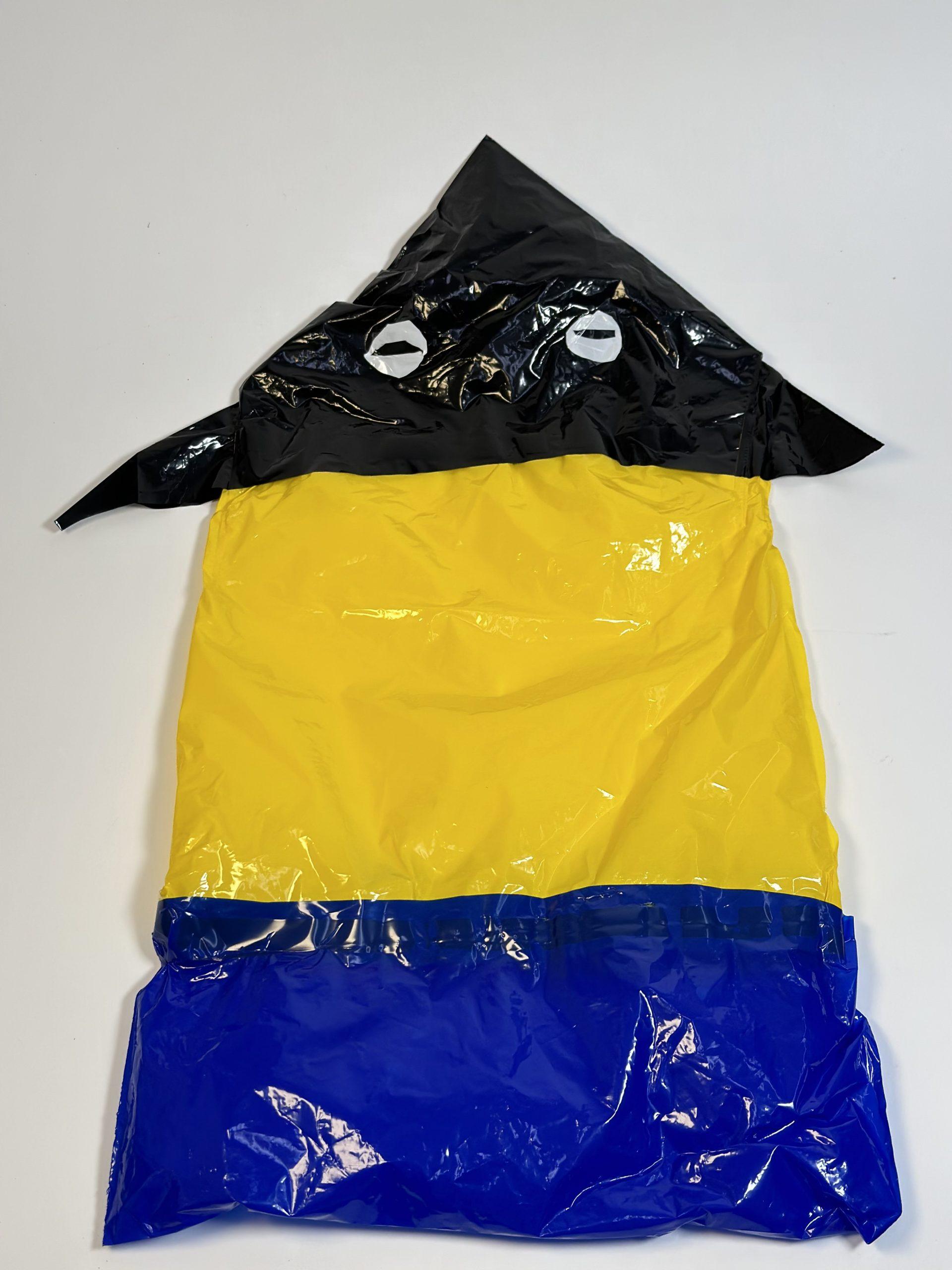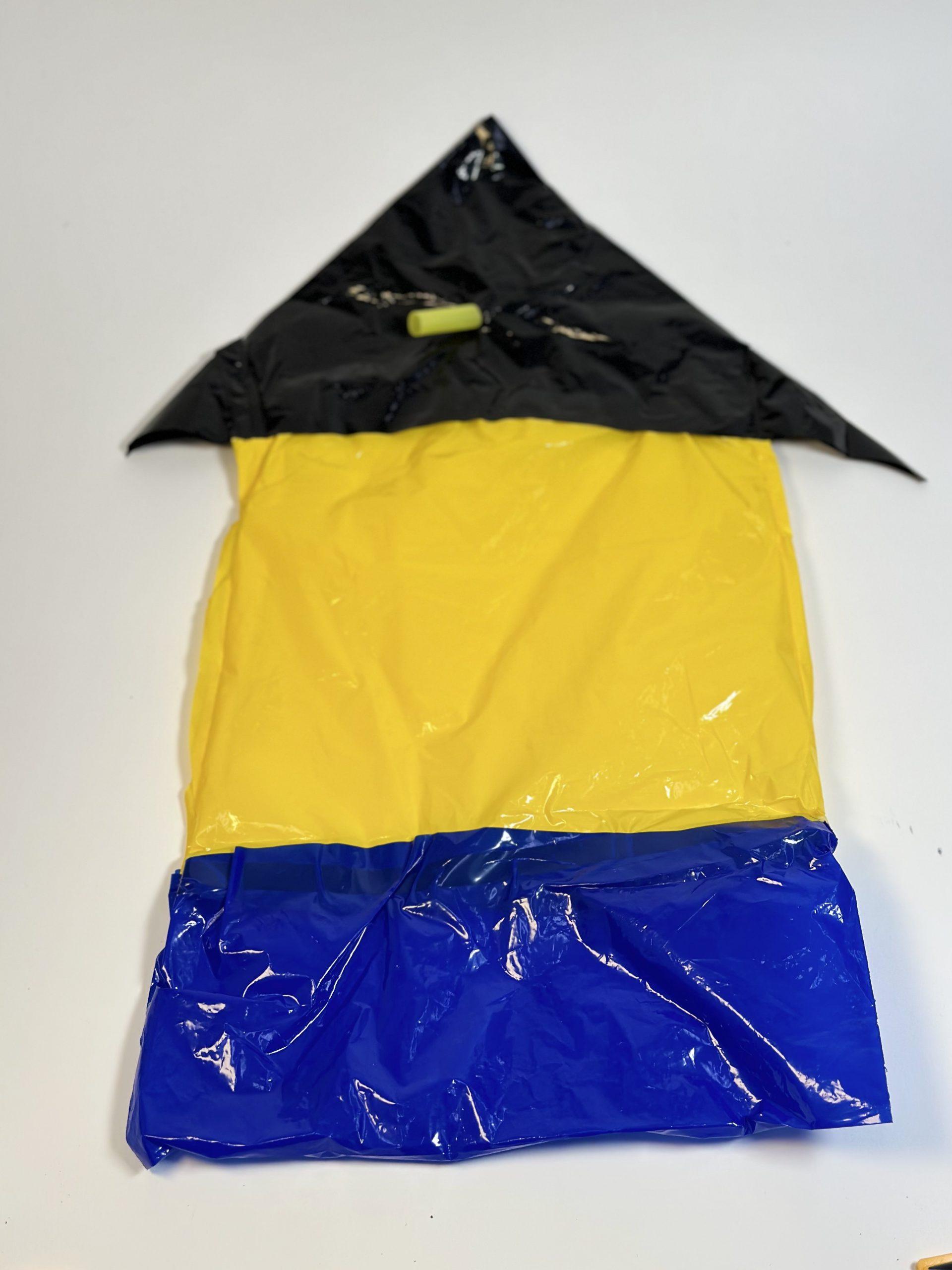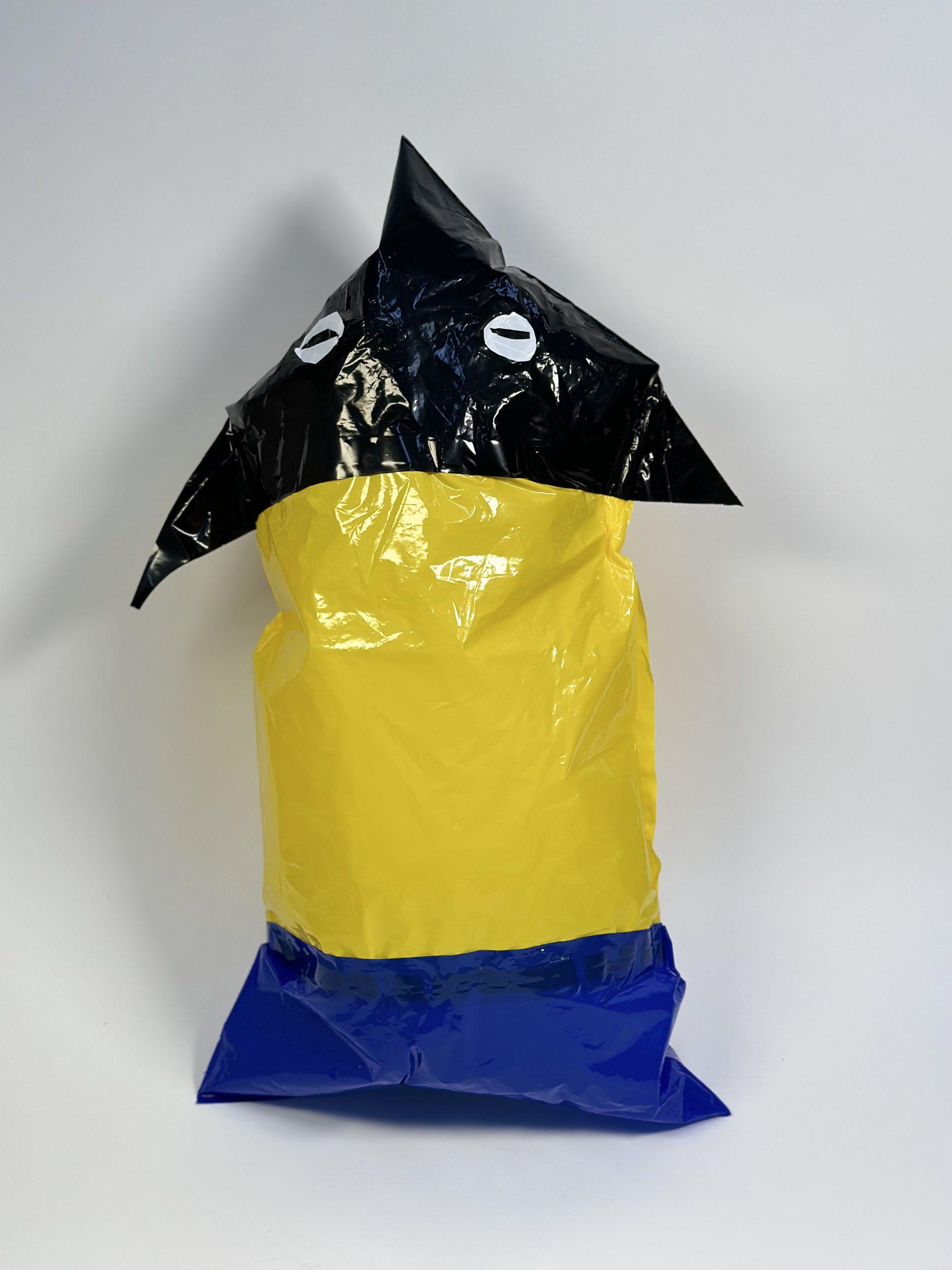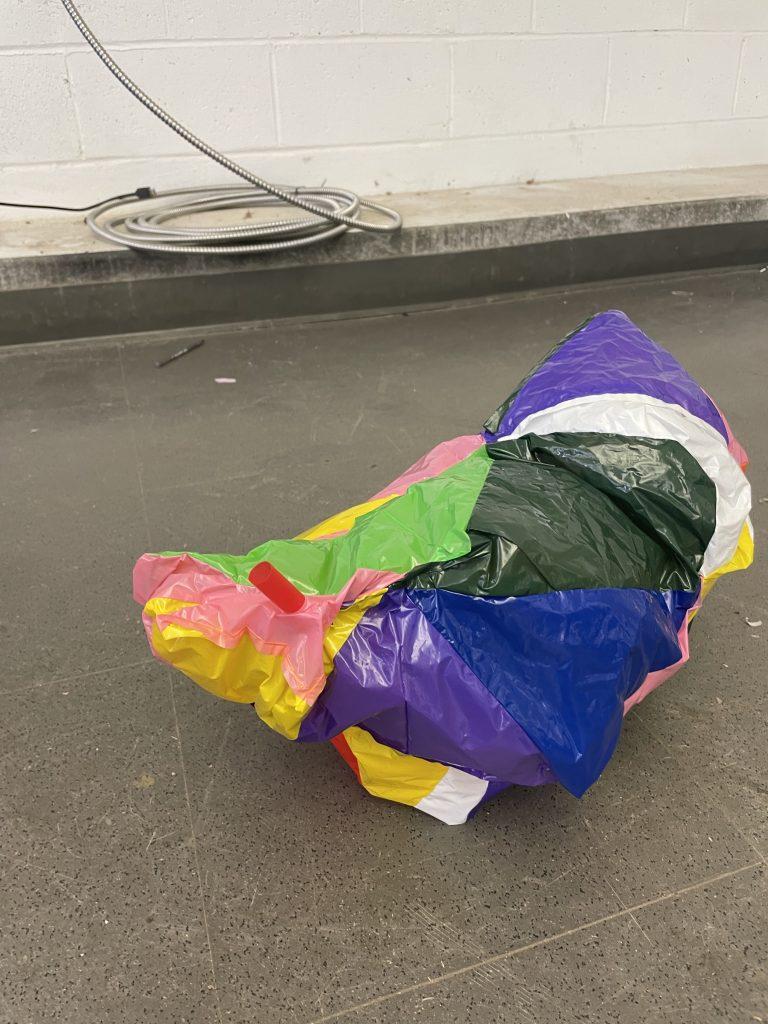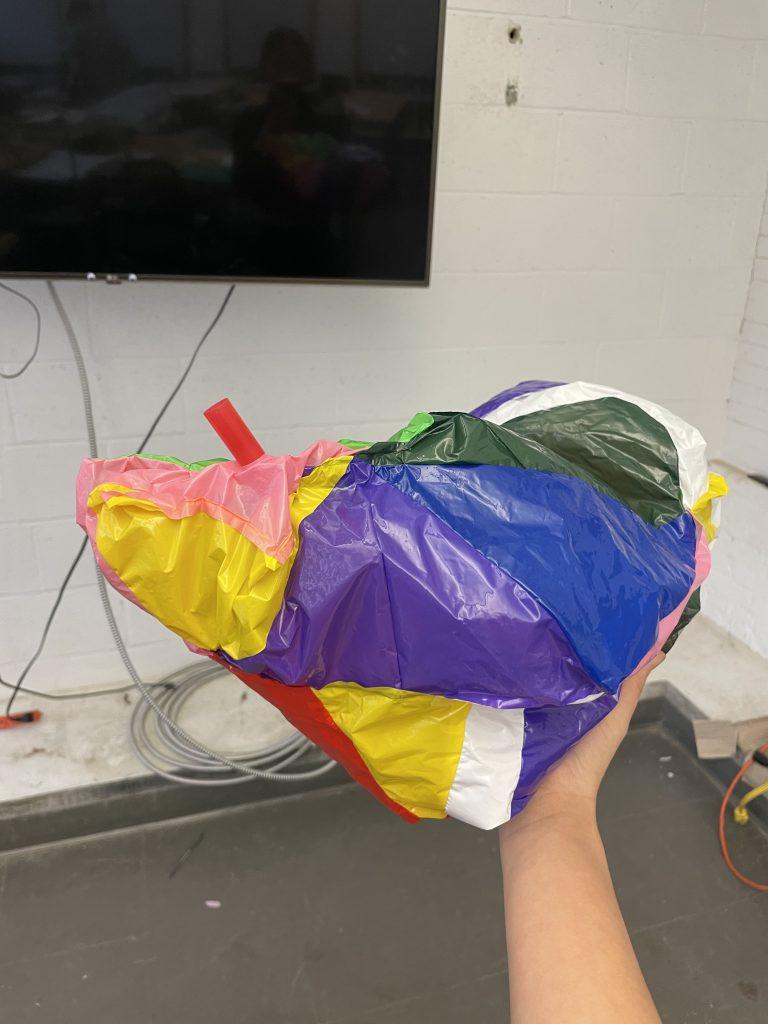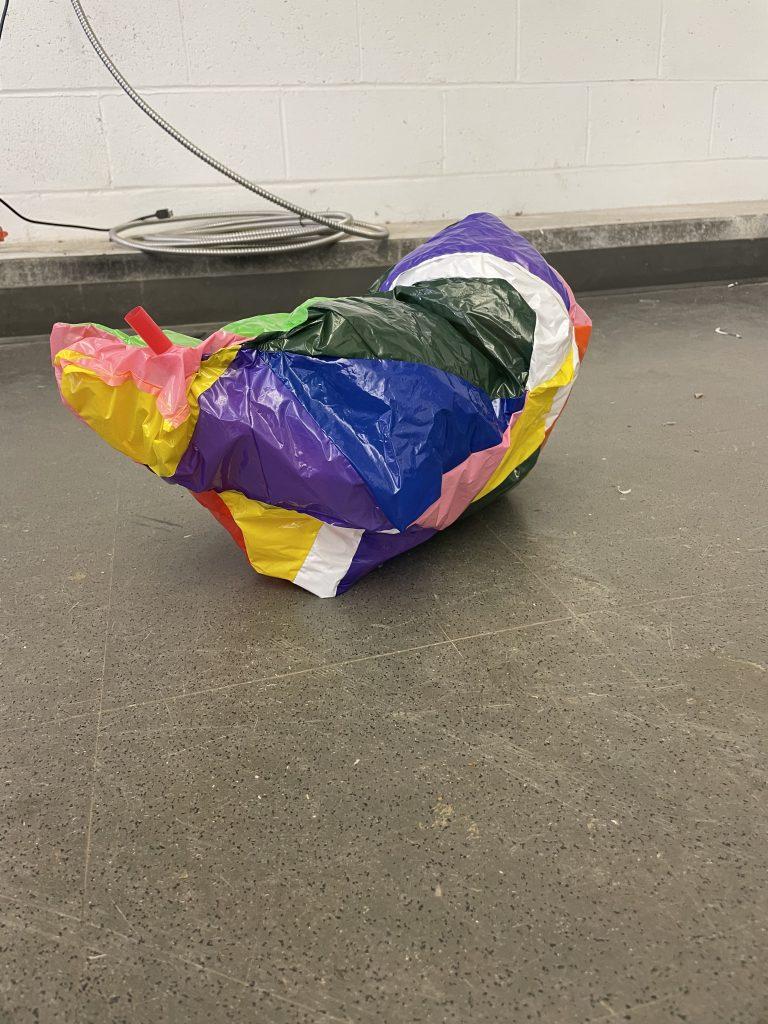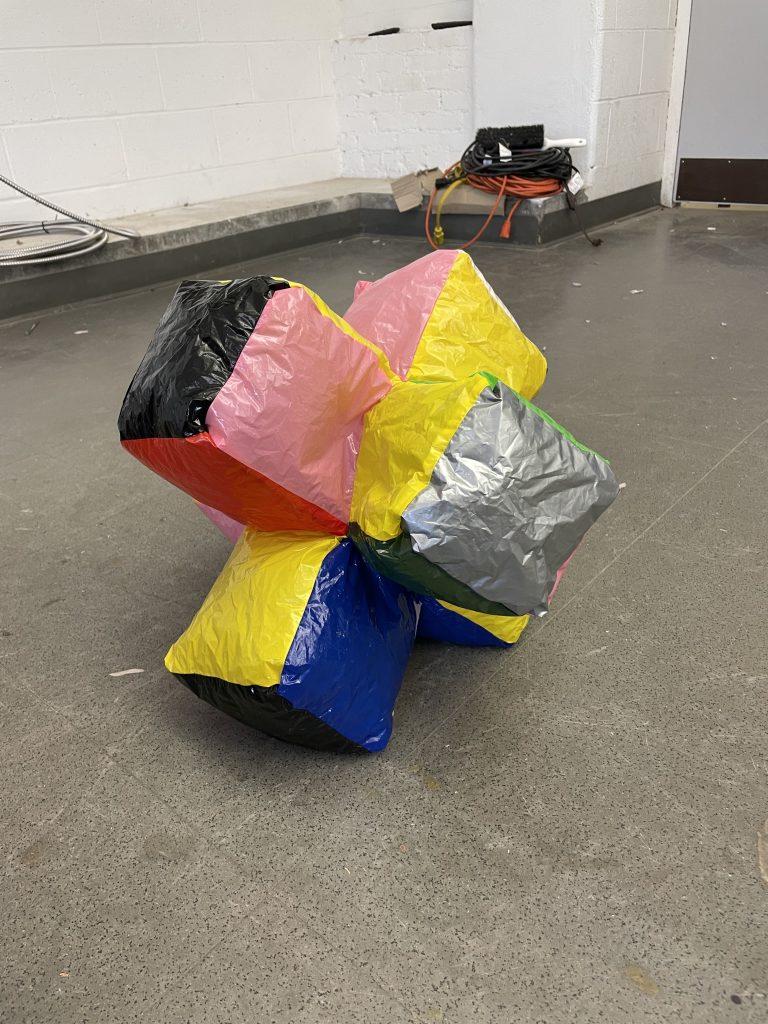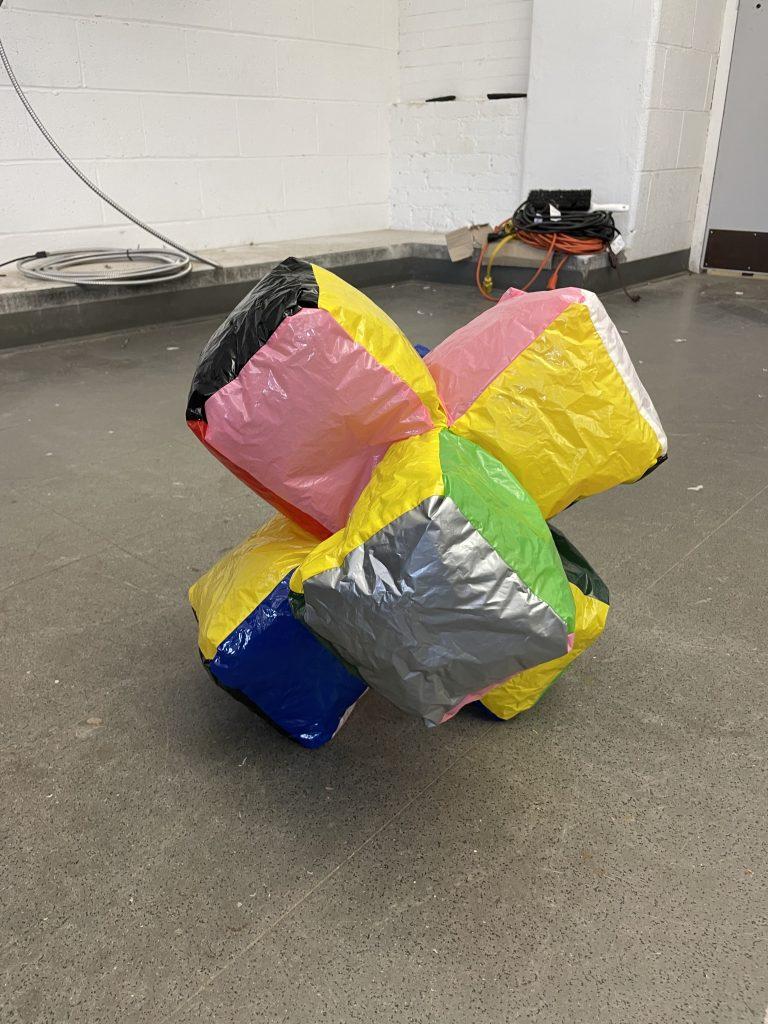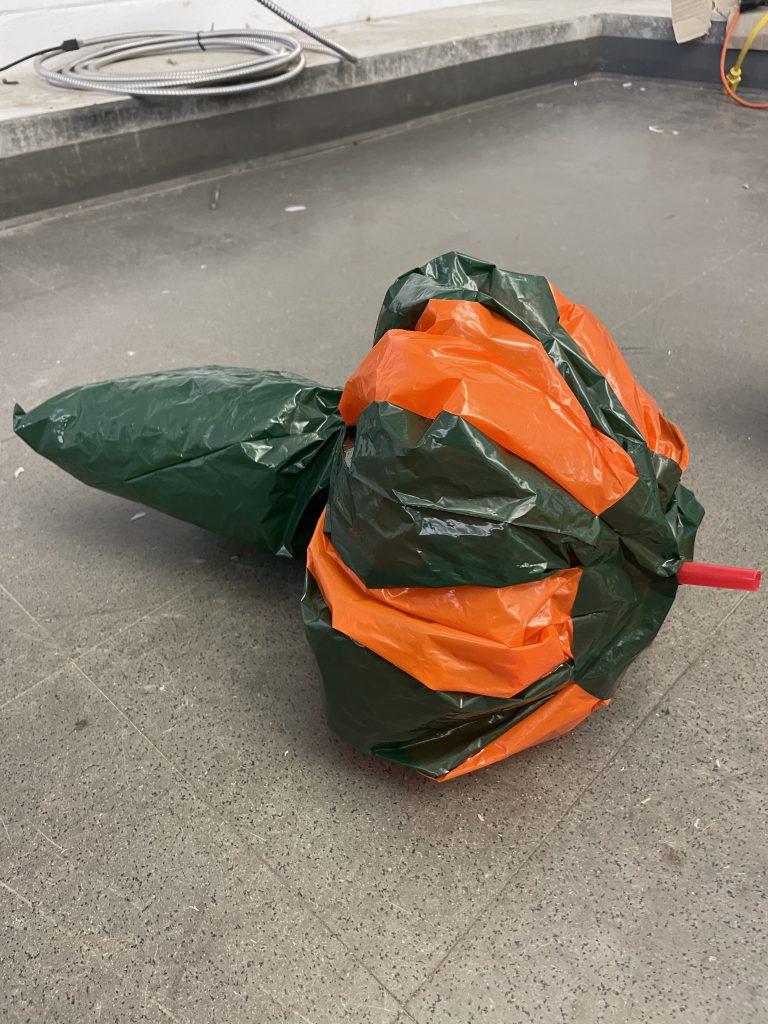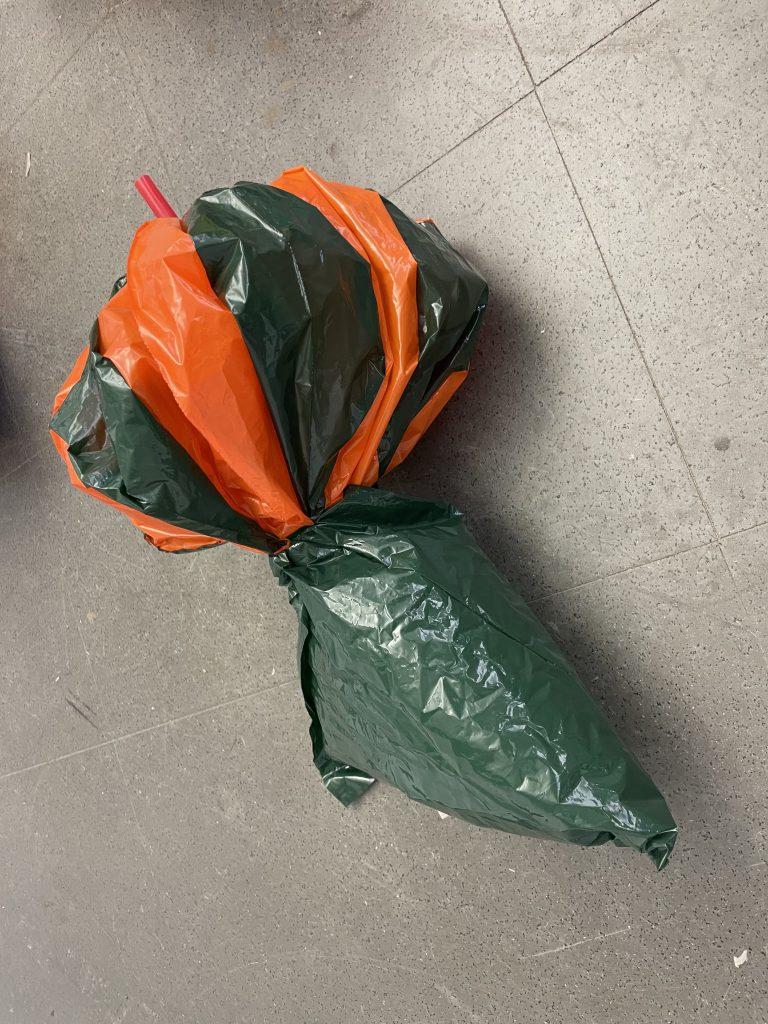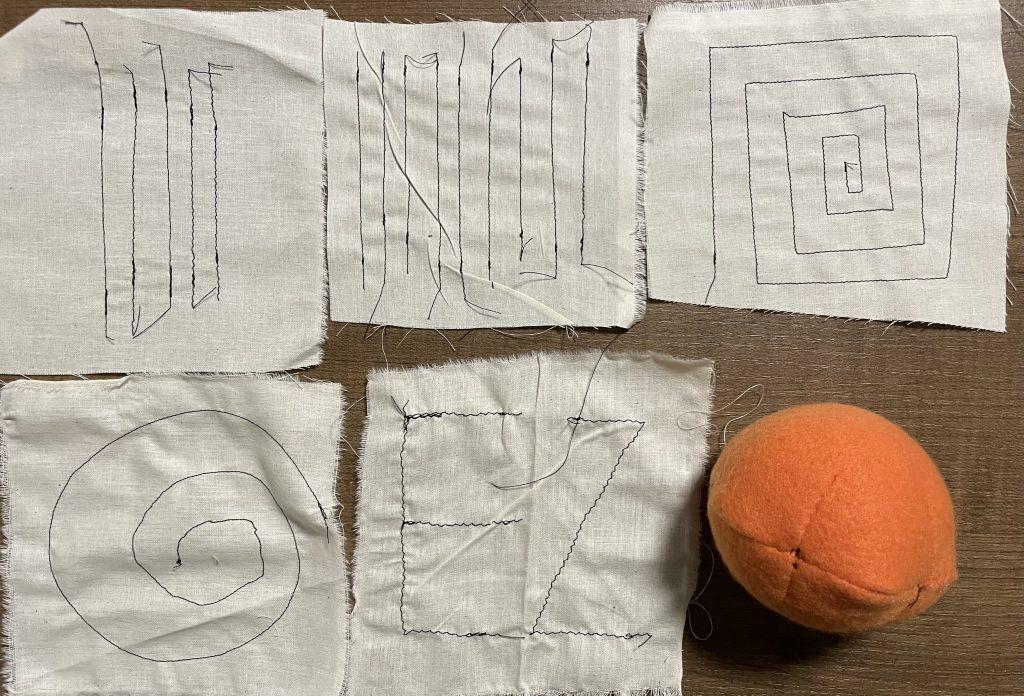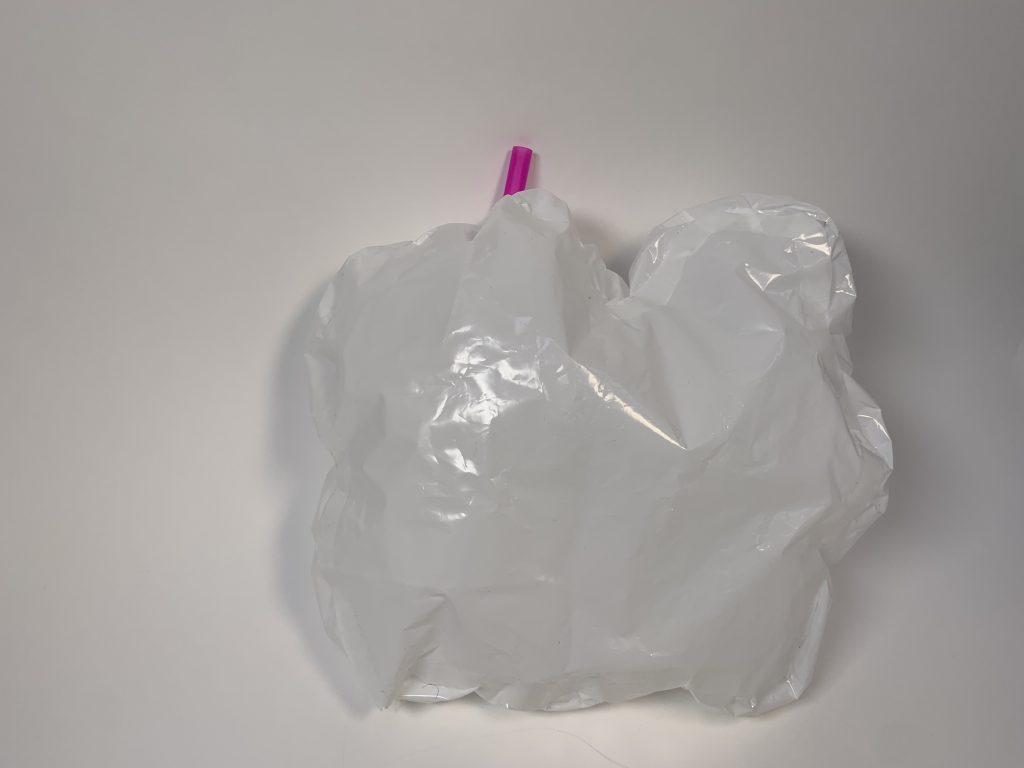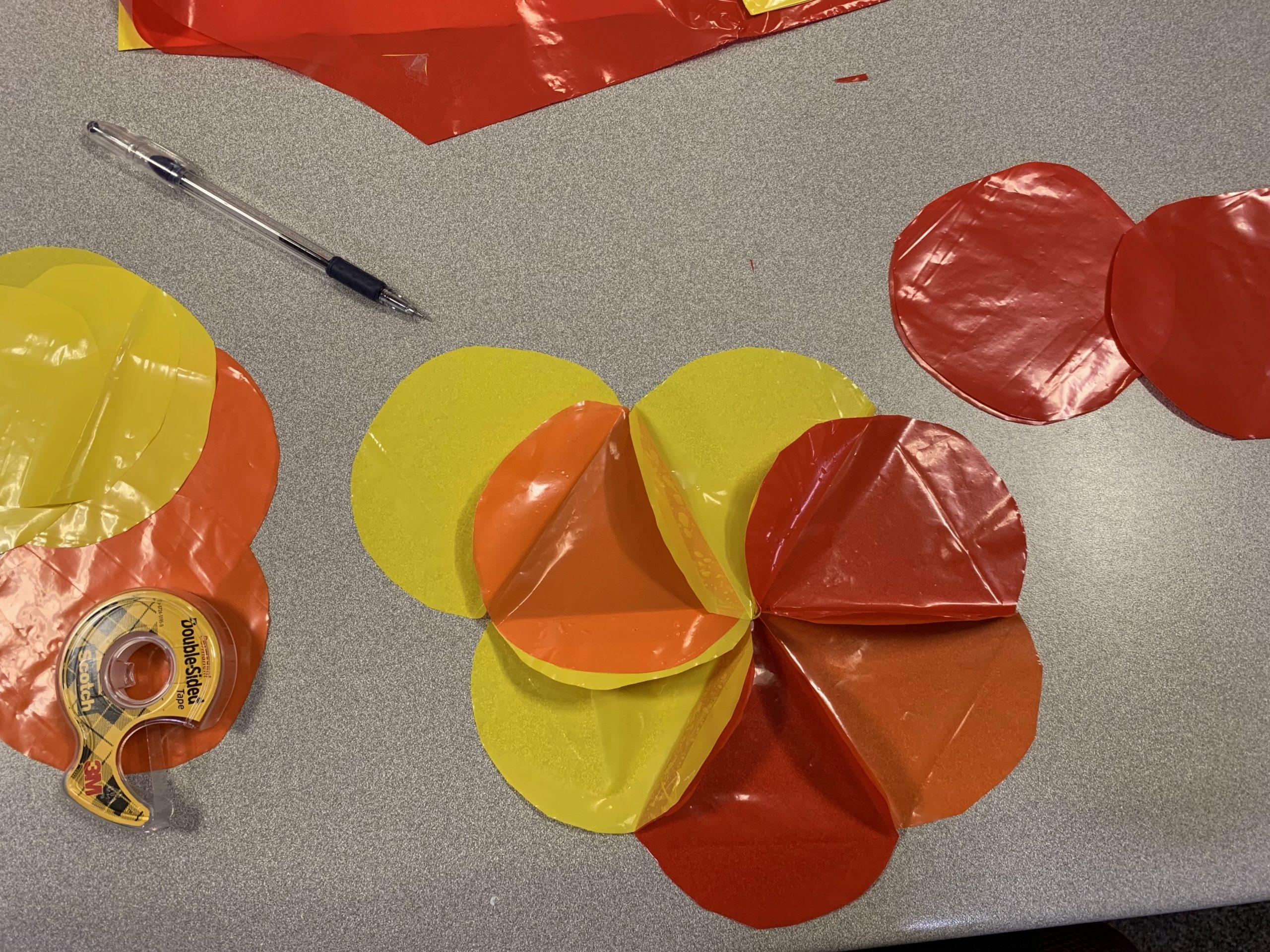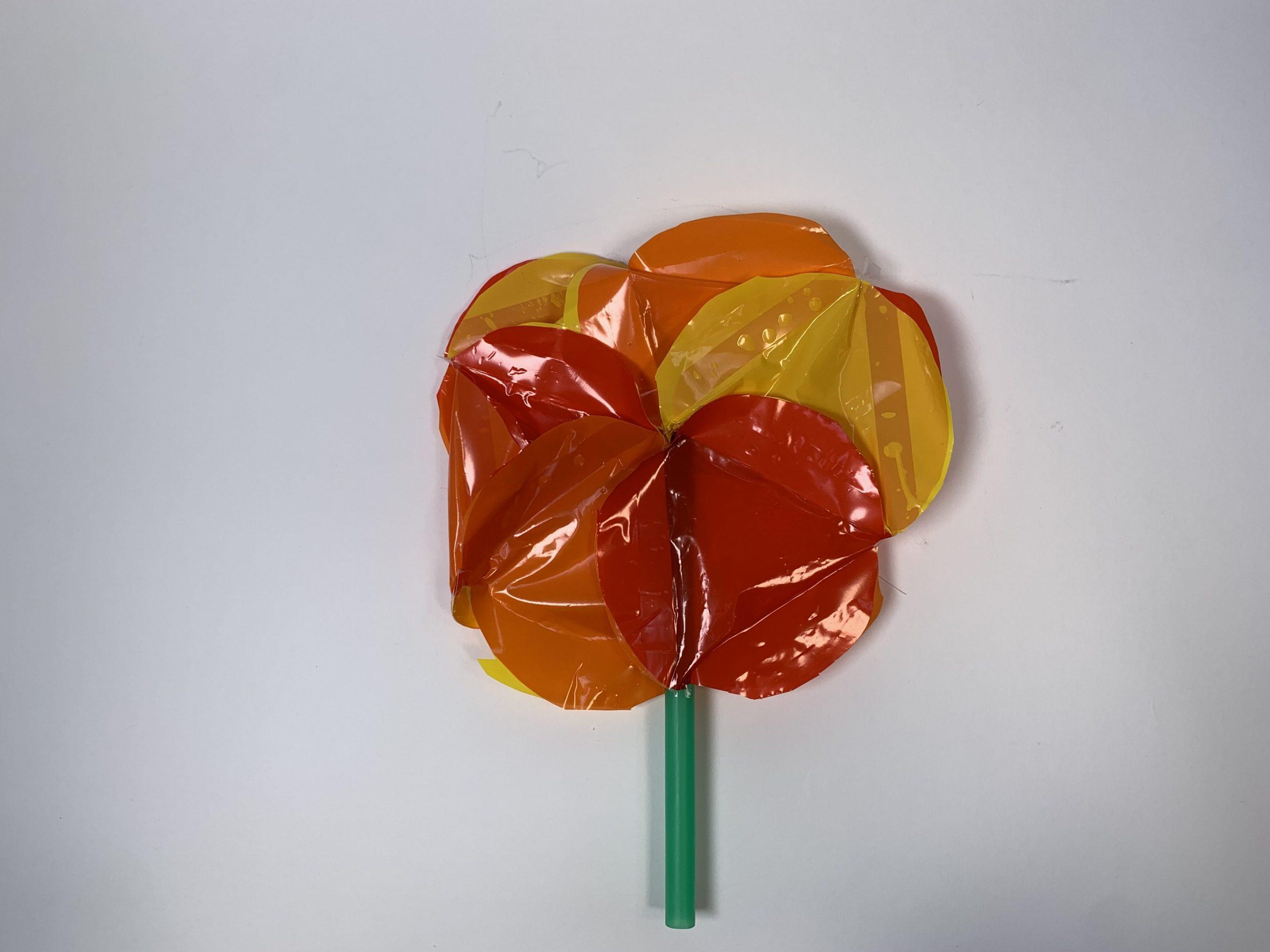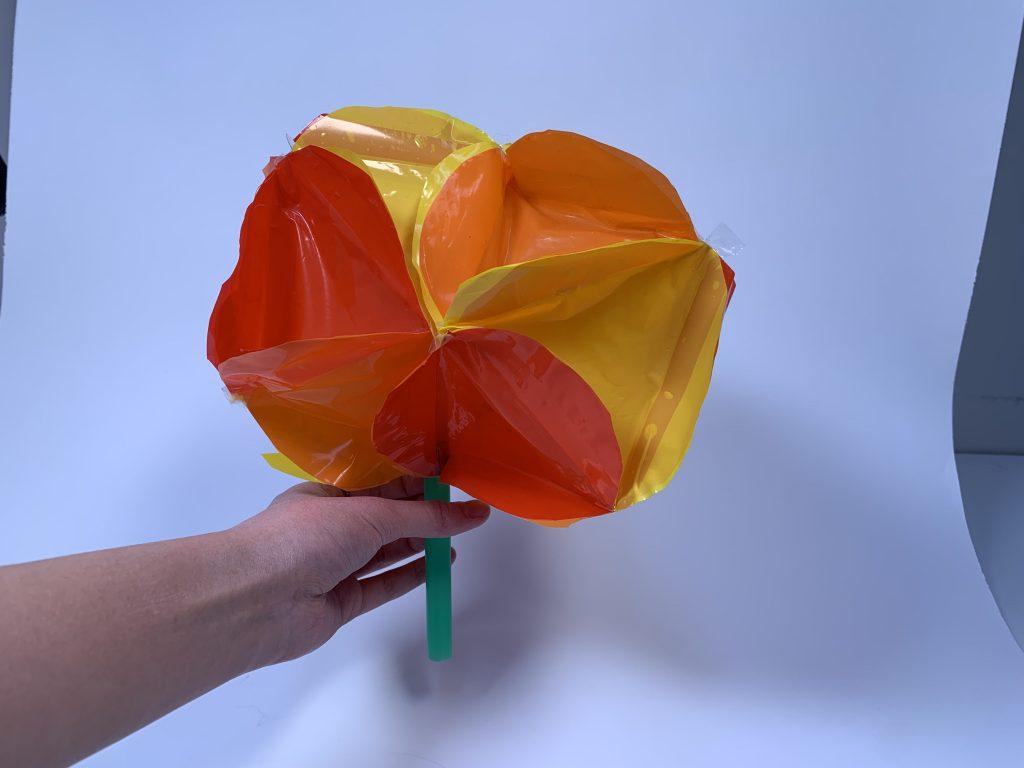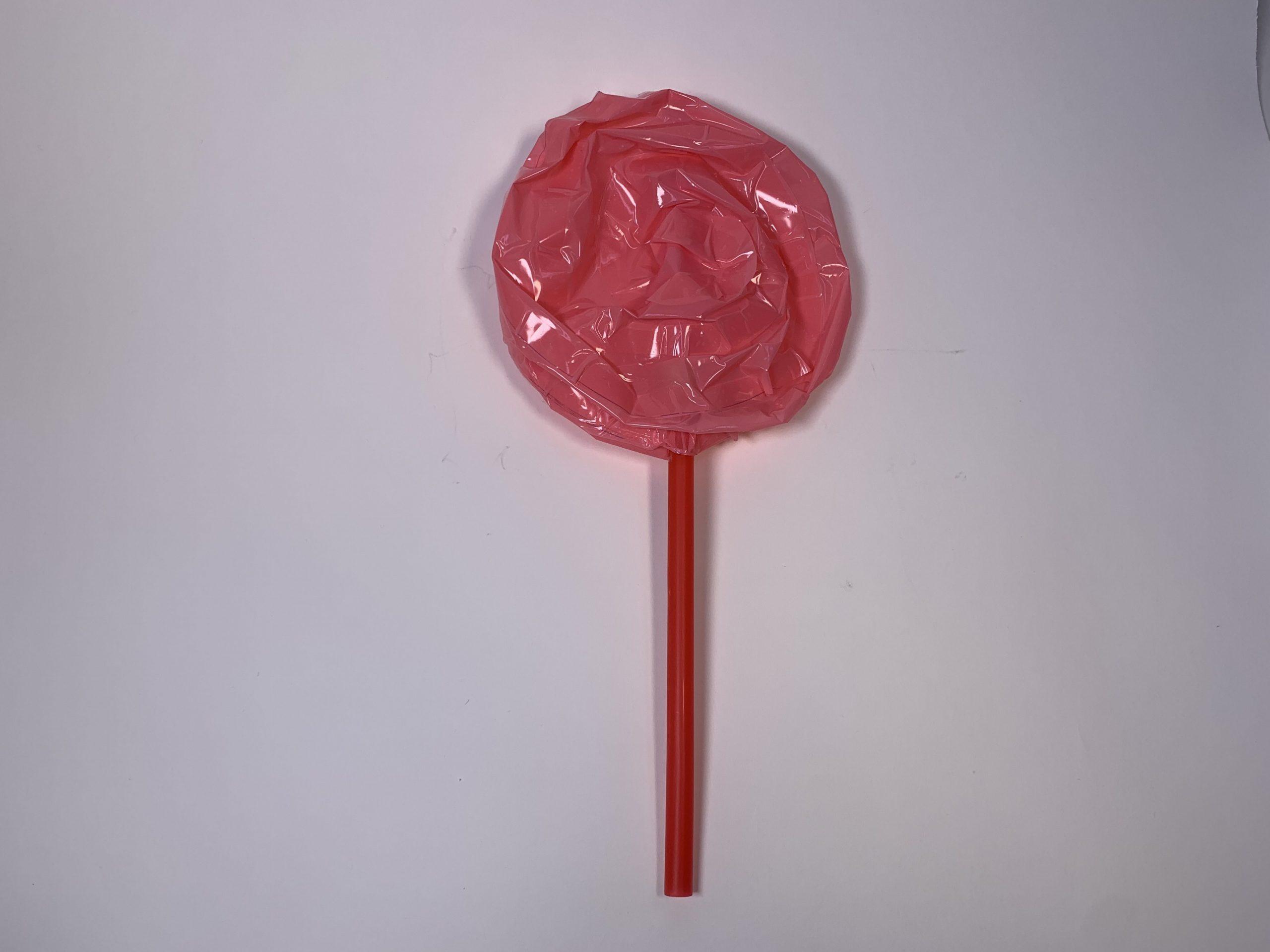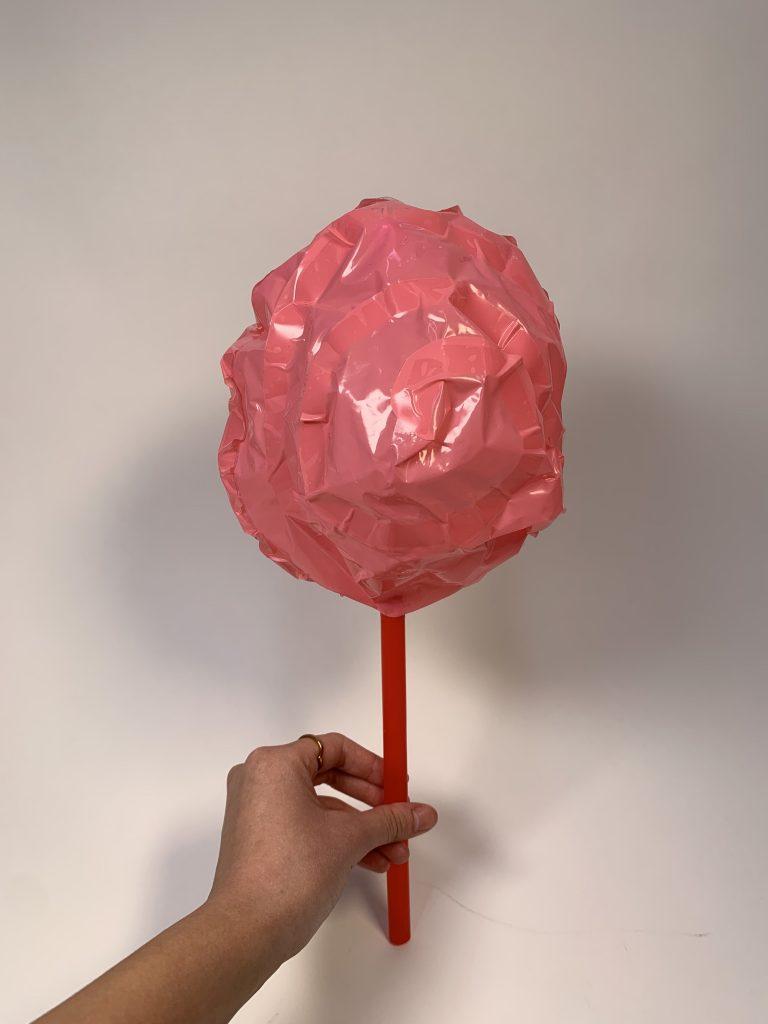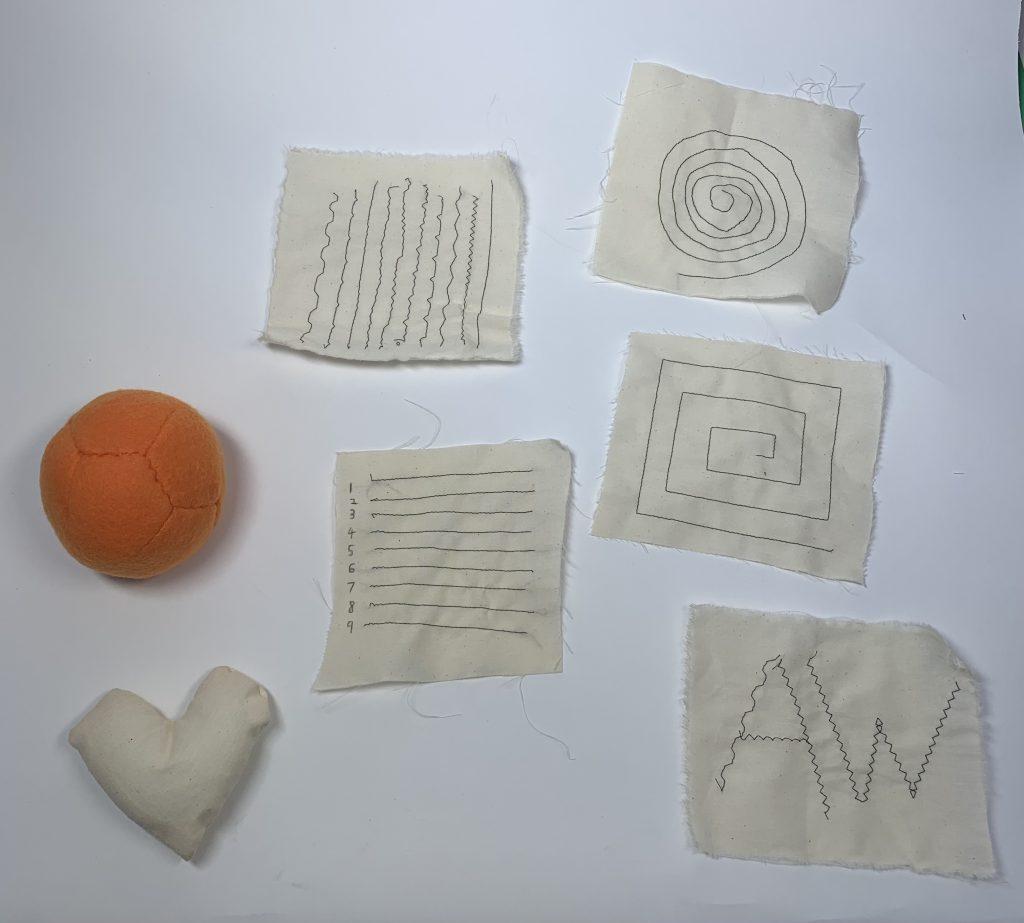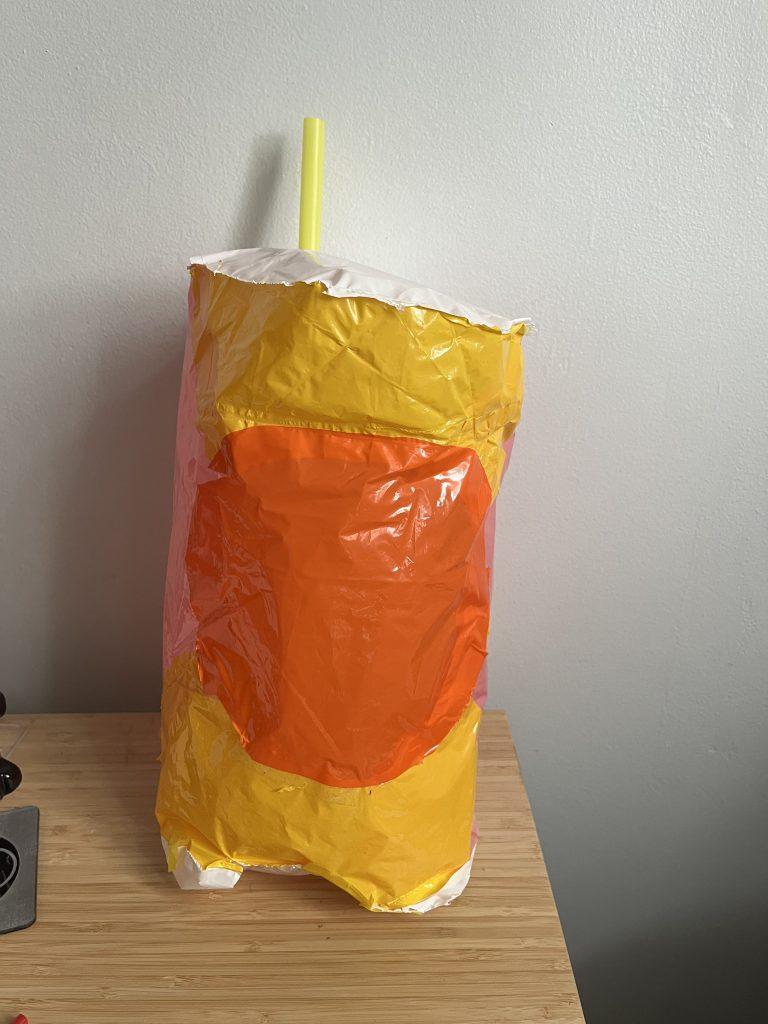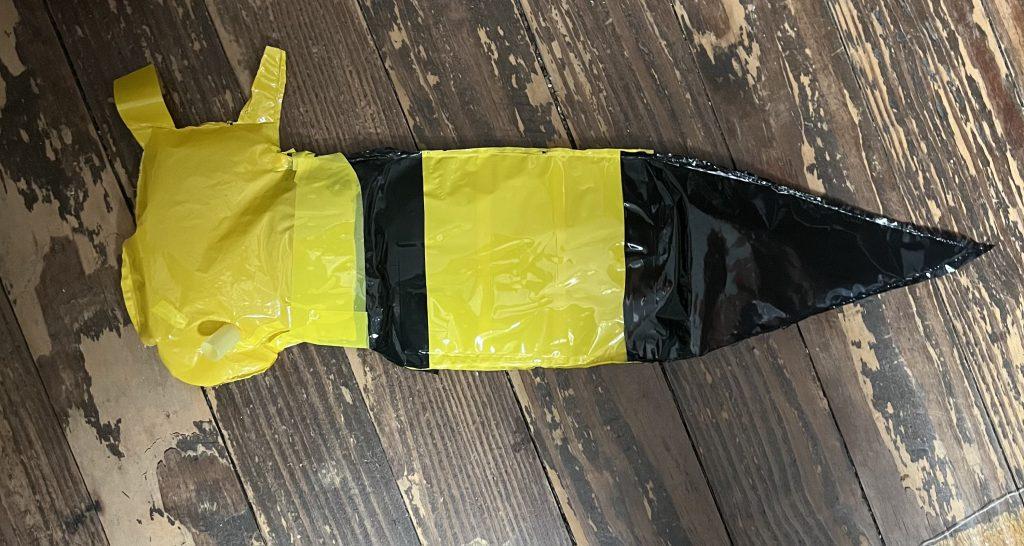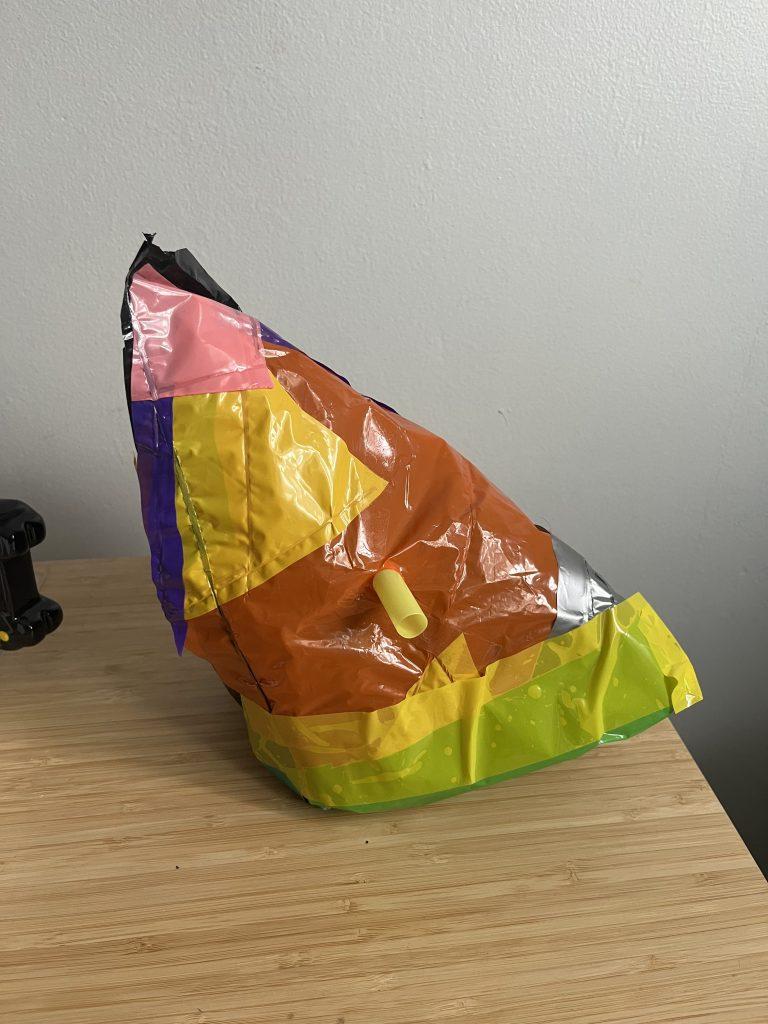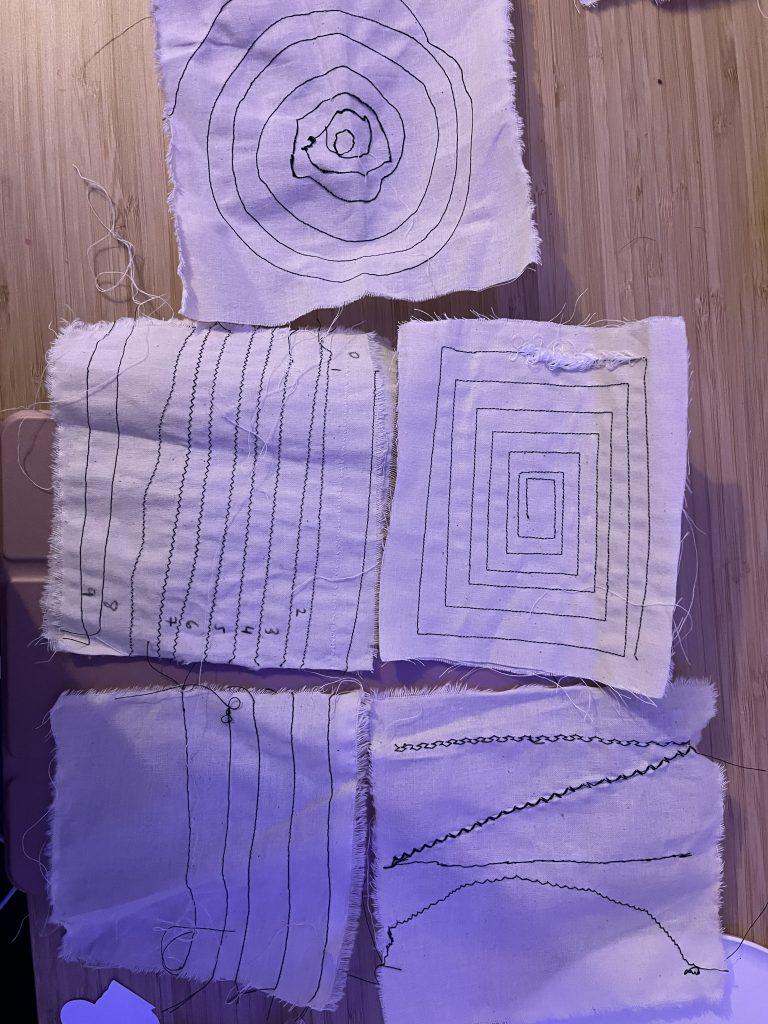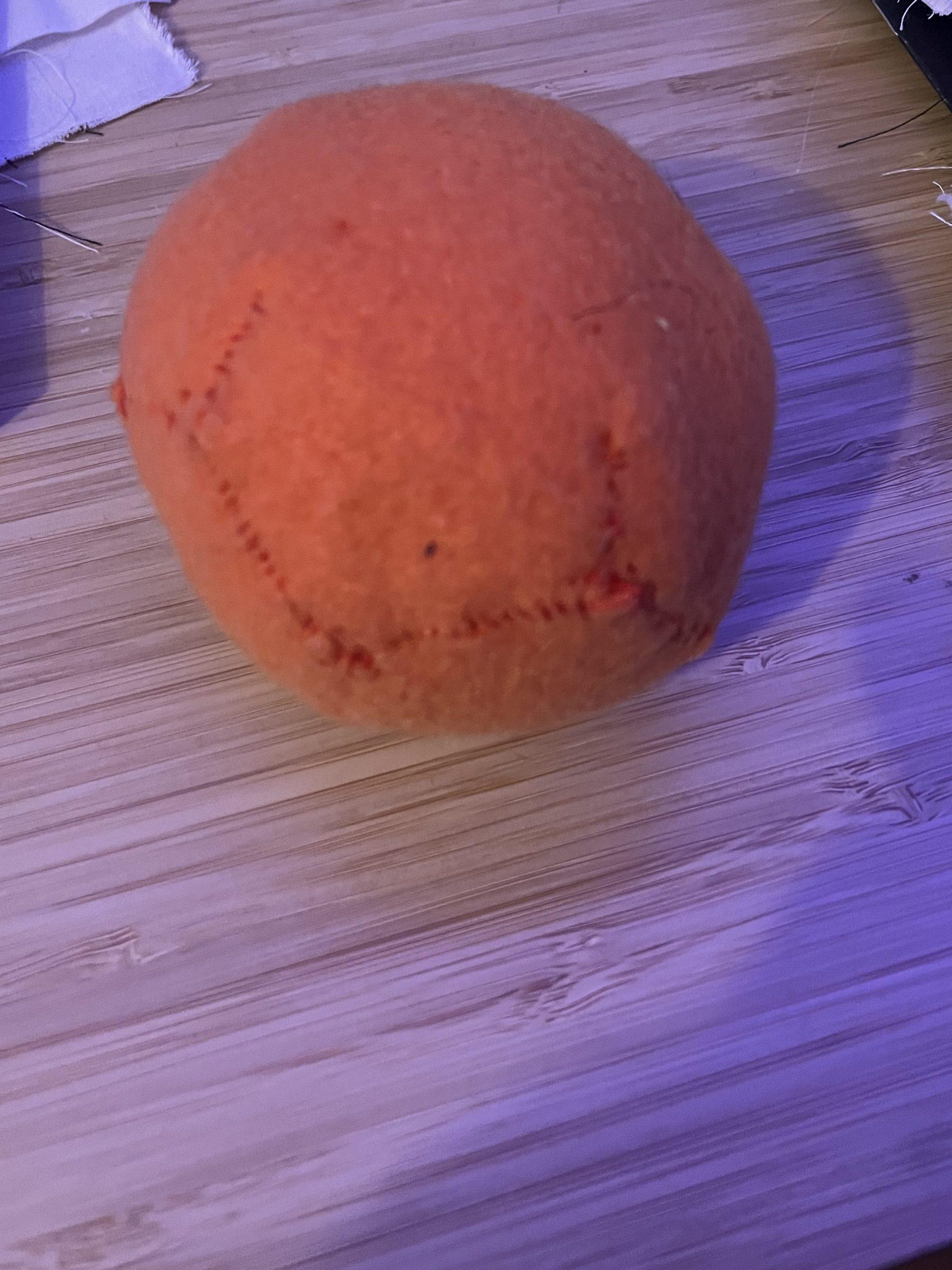Inflatable 1
I approached my first inflatable with a general idea or concept. Initially, I wanted to create an object composed of multiple corners of plastic bags in order to create a “spiky” effect. However, I quickly realized how hard it was to tape several corners together at one point. In order to maintain my initial idea, I decided to heat seal several of the corners together to allow for more air to stay within the object itself. This led to some pieces of plastic being sealed entirely and sort of having a dangling effect on the inflatable. Although this wasn’t in my original plan, these strips gave a little more life to the inflatable and complemented the spikes that ended up inflating.
Inflatable 2
In order to explore some more geometrically oriented objects, I decided my next inflatable would have the shape of a star. In order to add complexity I broke the star into two shapes. The center – which is composed of a pentagon, and all the corners which were made using the corners of the plastic bags. The center of the star was made transparent on purpose to allow people to view inside the star and compare the inflated versus the not inflated object. It also added a perspective aspect – since spectators could directly observe the person manually inflating the star through the transparent portion.
Inflatable 3
For my third inflatable I chose to have a more “freestyle” approach. I decided on a color palette beforehand and cut different shapes of these colors. I wanted the base of the object to be transparent and use the pink and green colors to create a patching effect throughout the entire inflatable. The base was made transparent intentionally to allow for different perspectives of the inside and outside of the object as well as to highlight the contrasting colors of the neon green and bright pink patches.
Sewing Samples & Ball
I used the basic pattern for the ball and forgot to take stuffing with me and ended up deciding to improvise and stuff it using feathers from a pillow I had laying around. I also misplaced the sample with my initials 🙁


